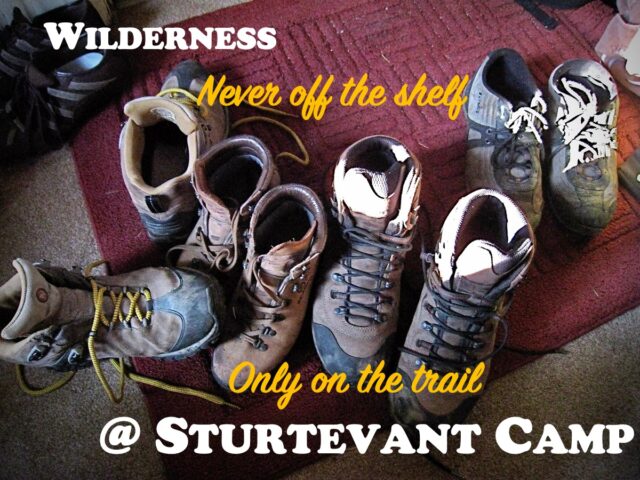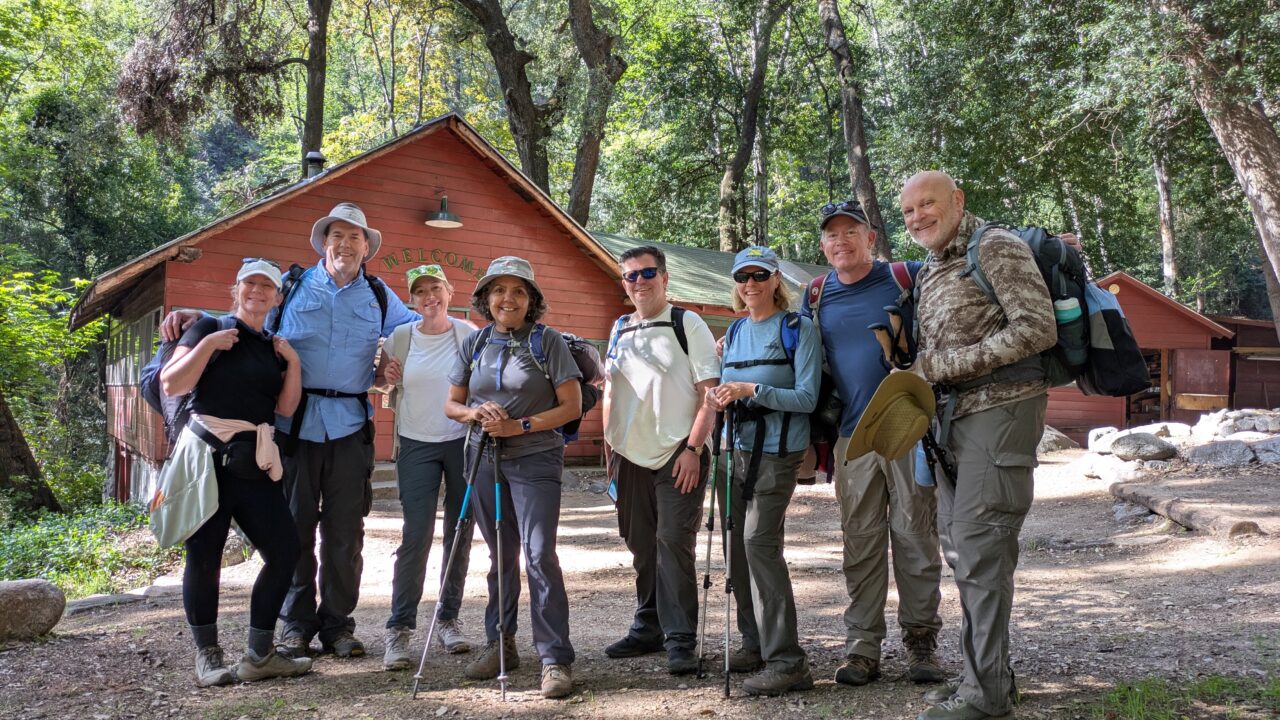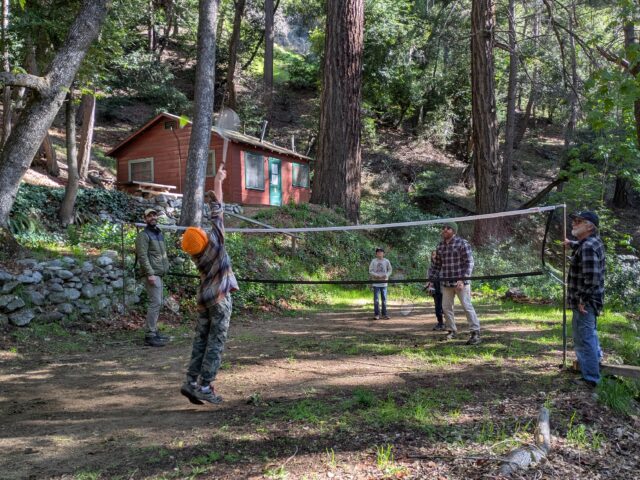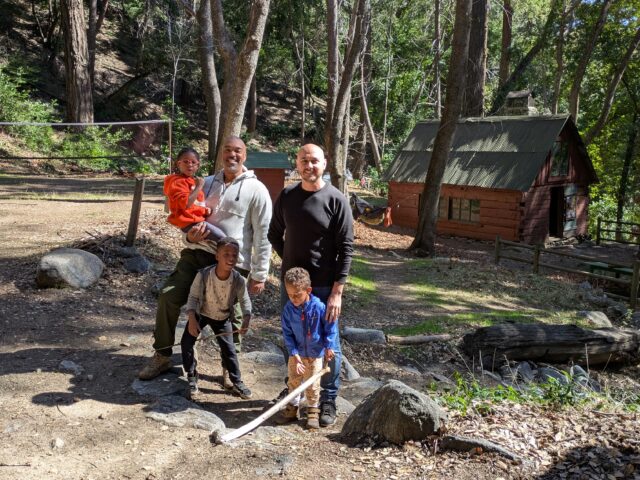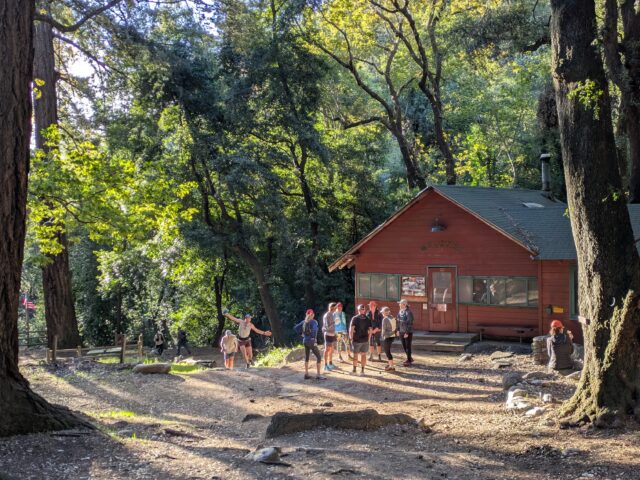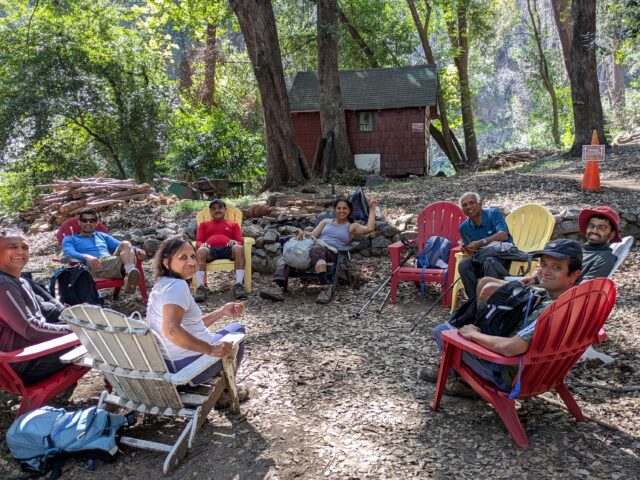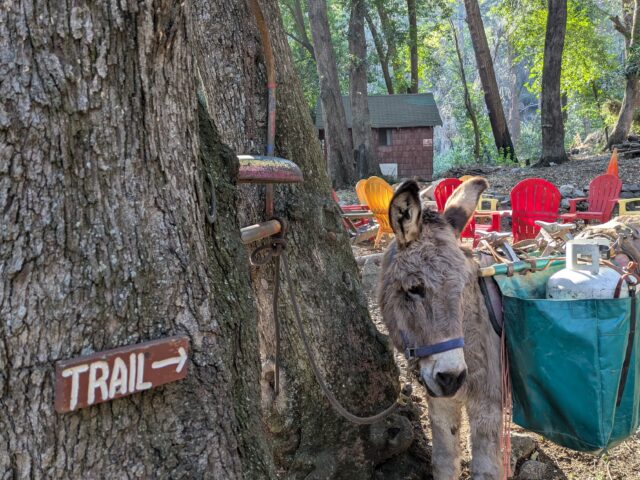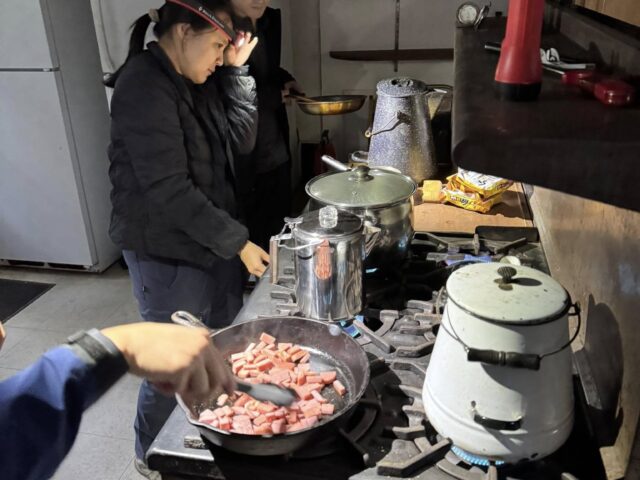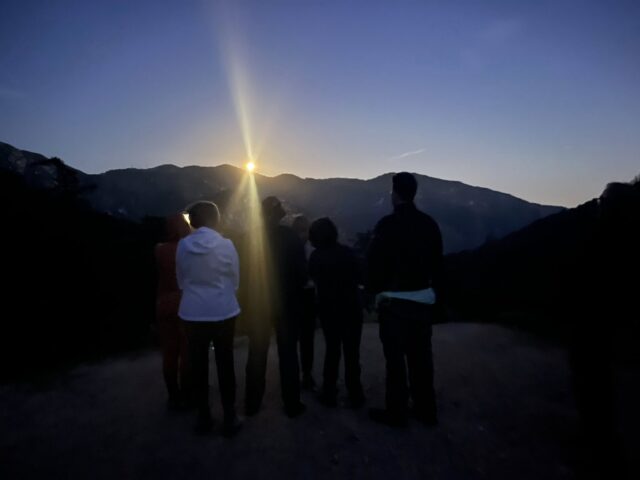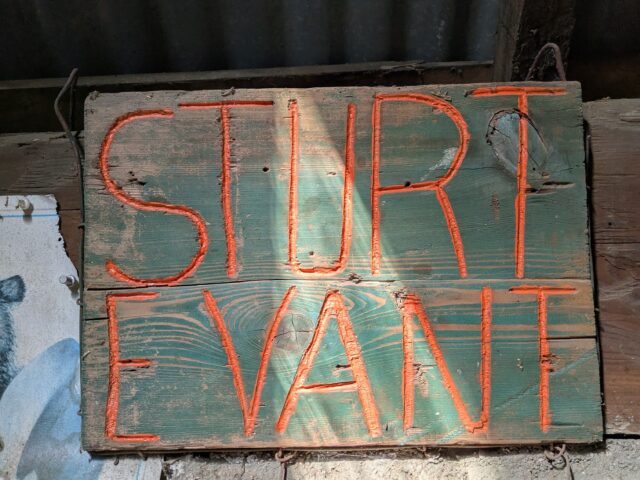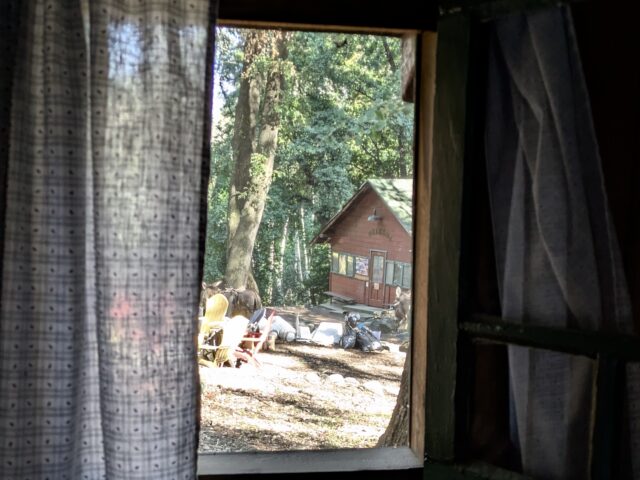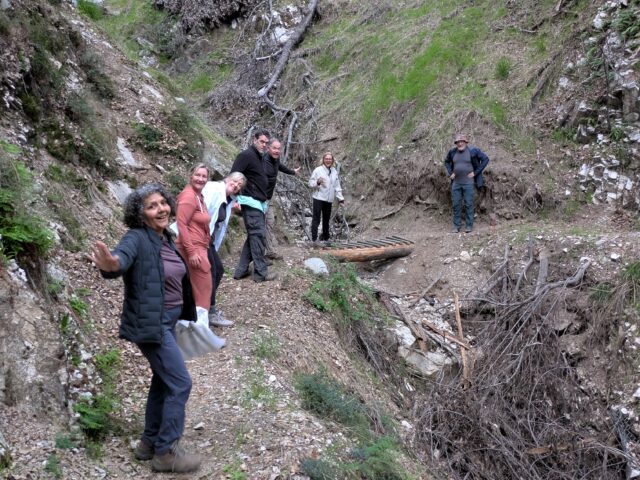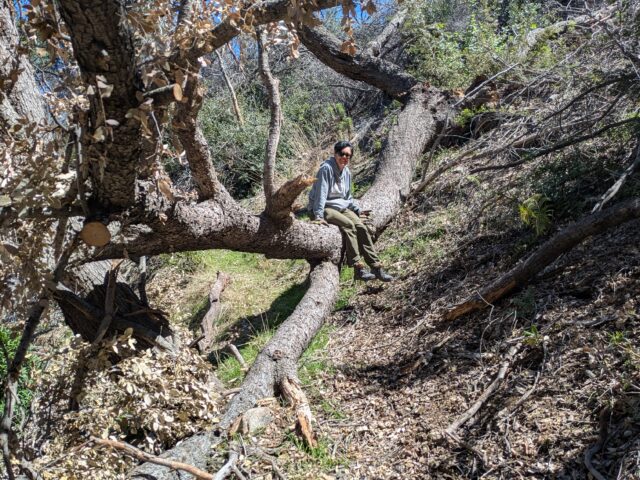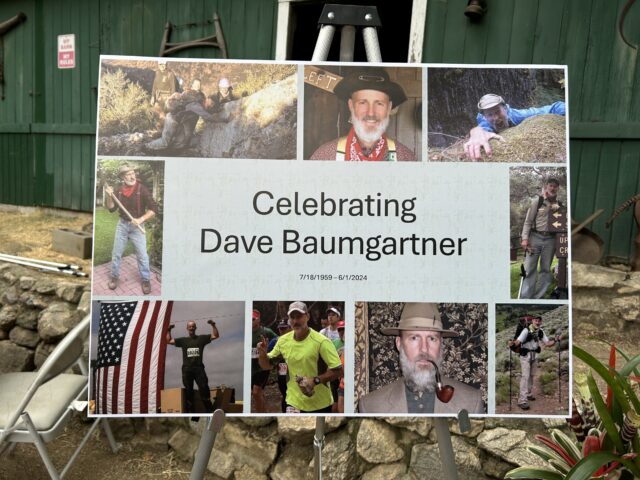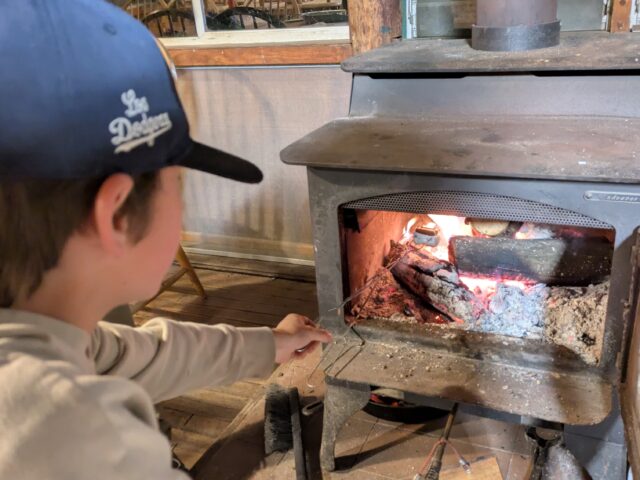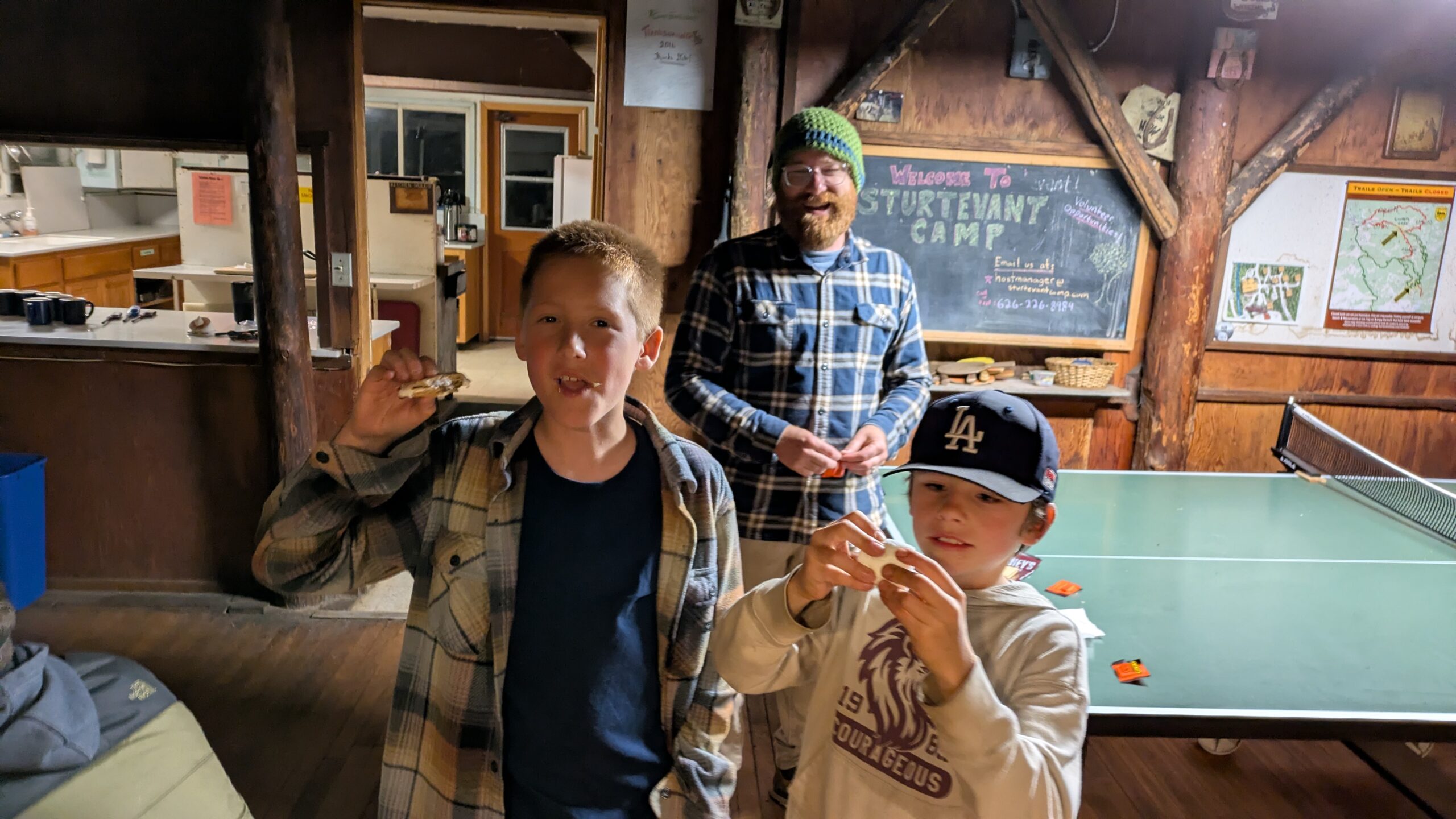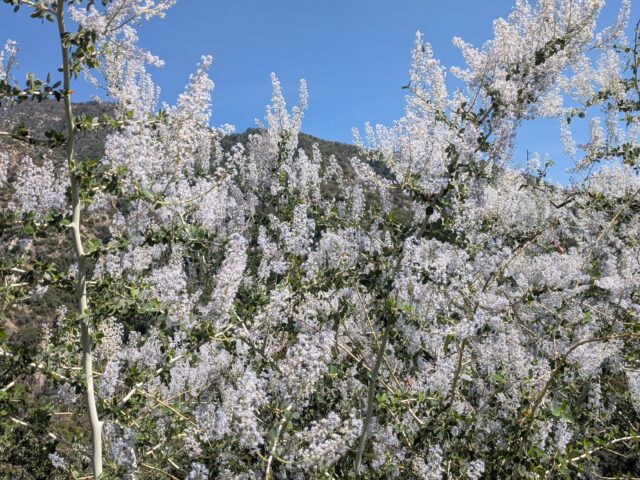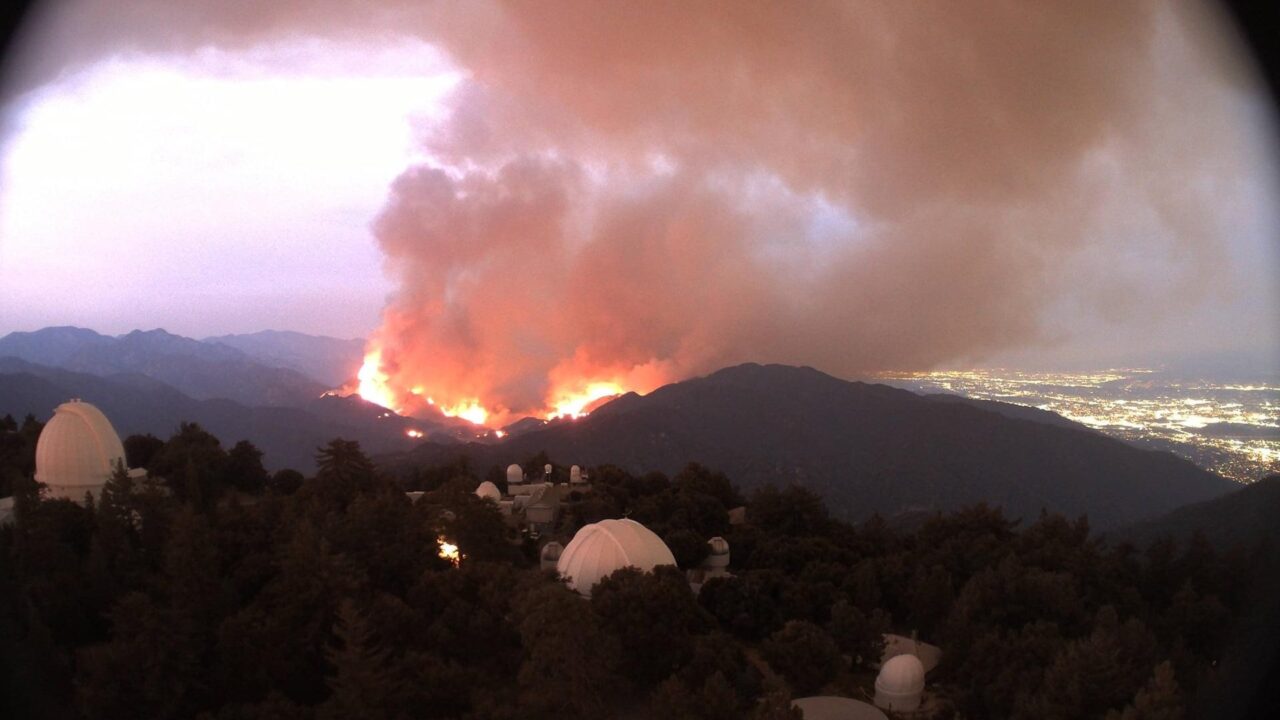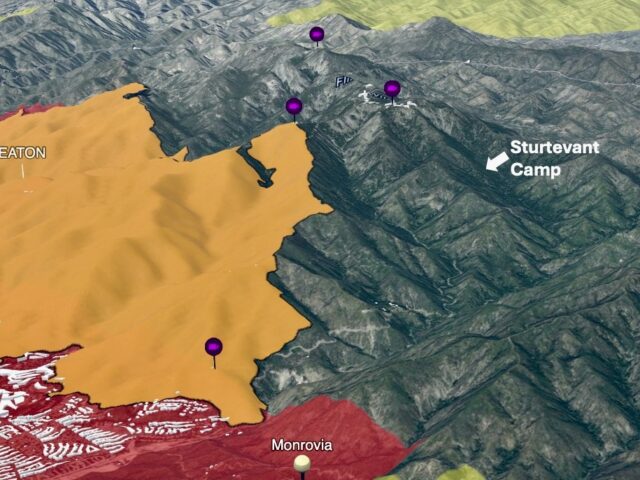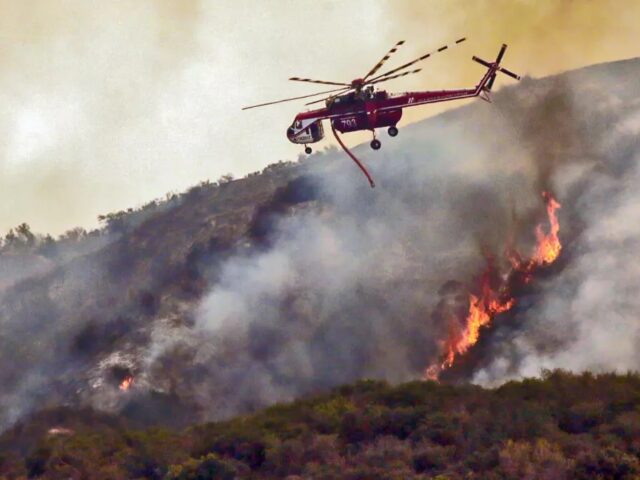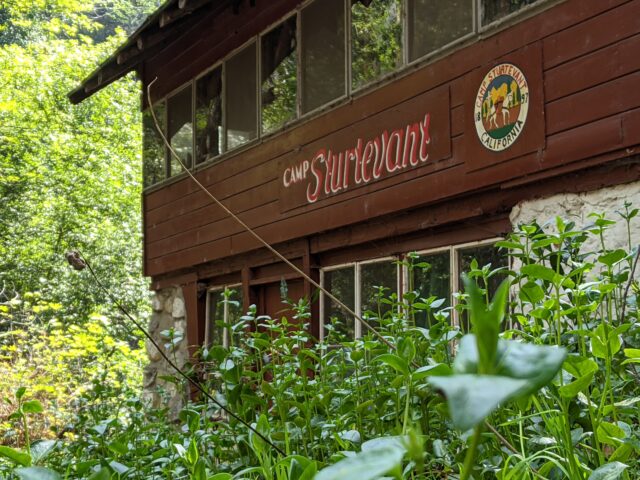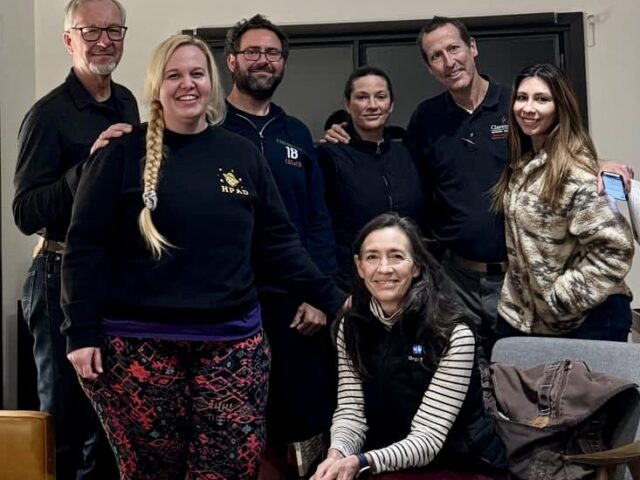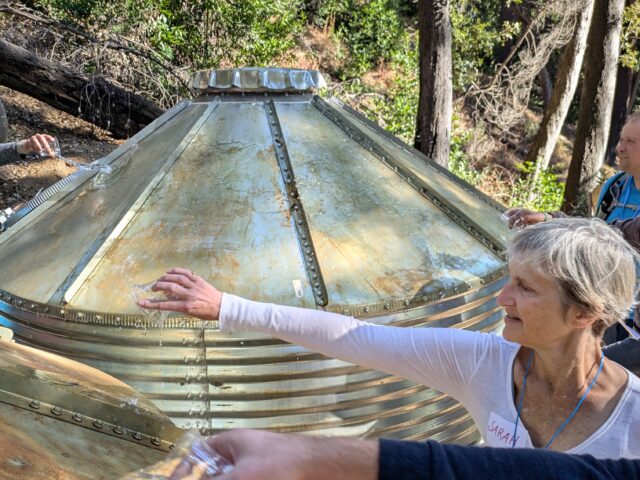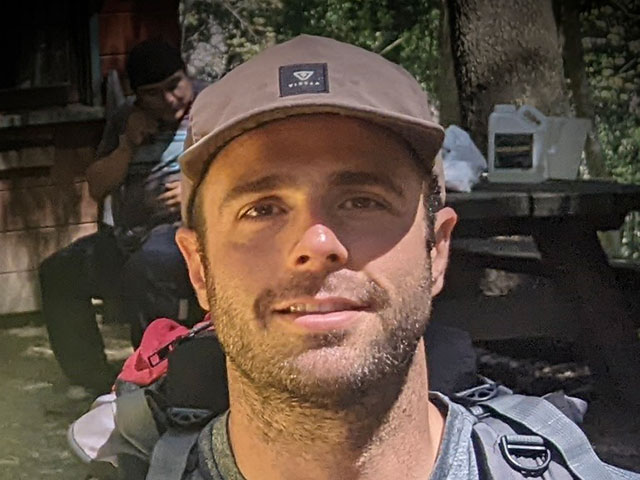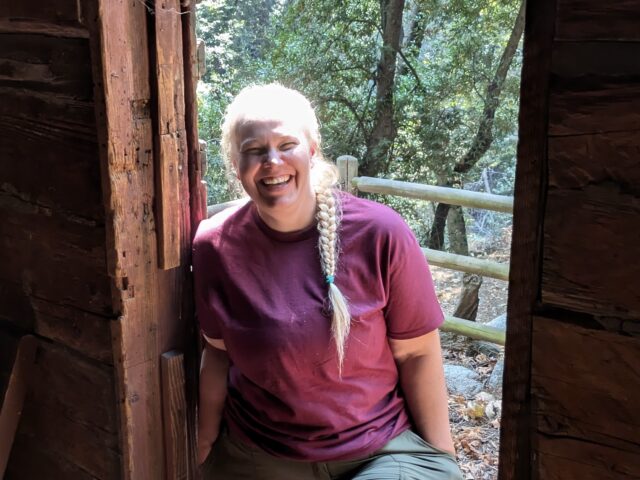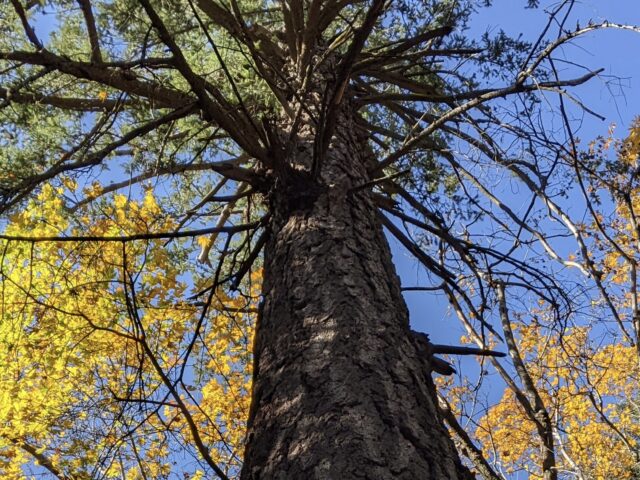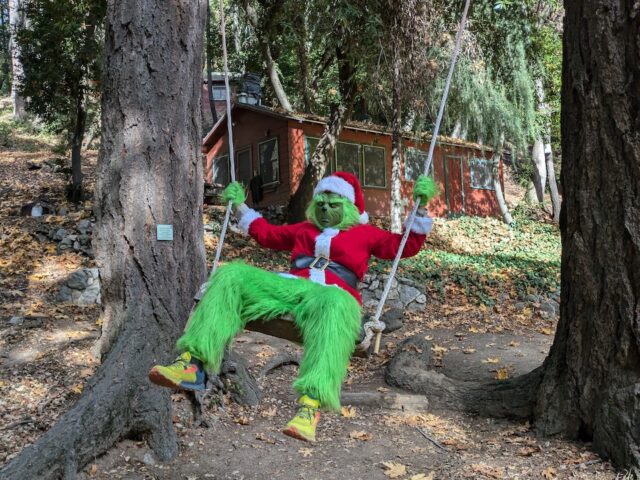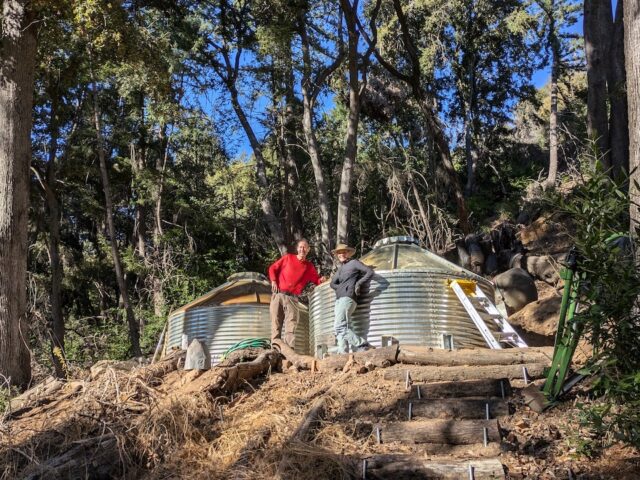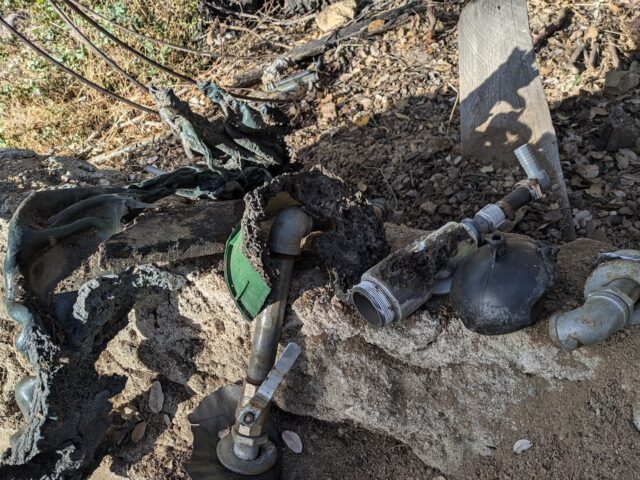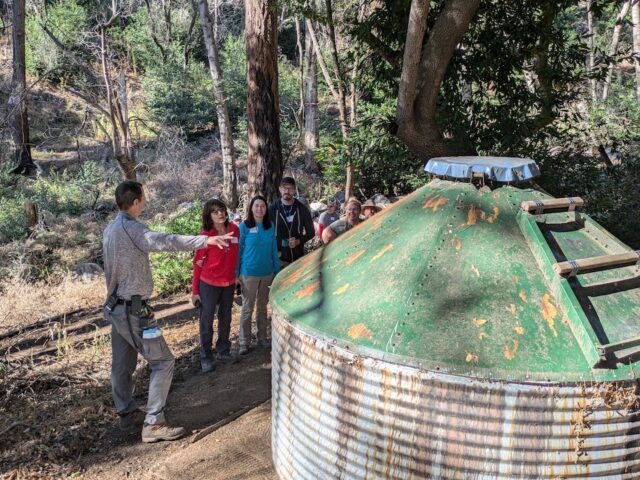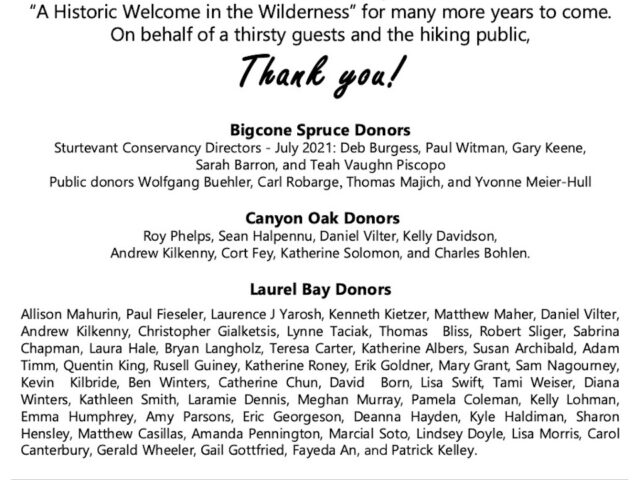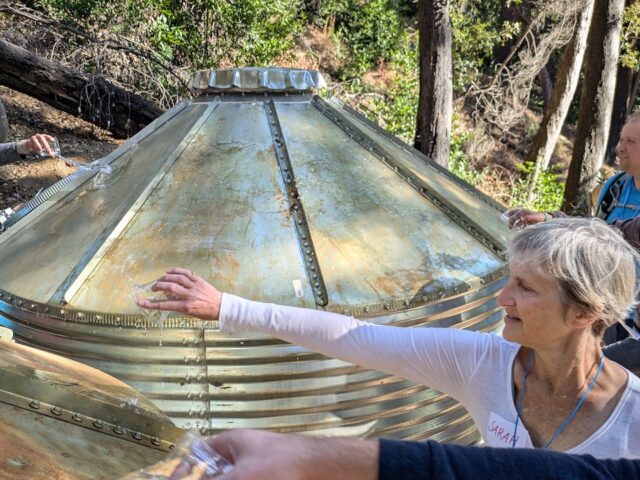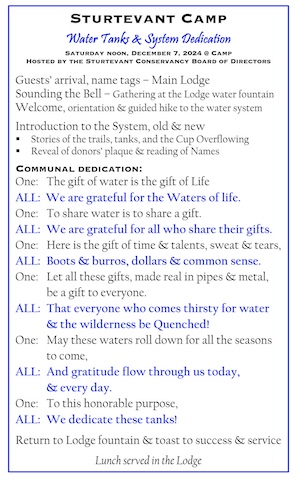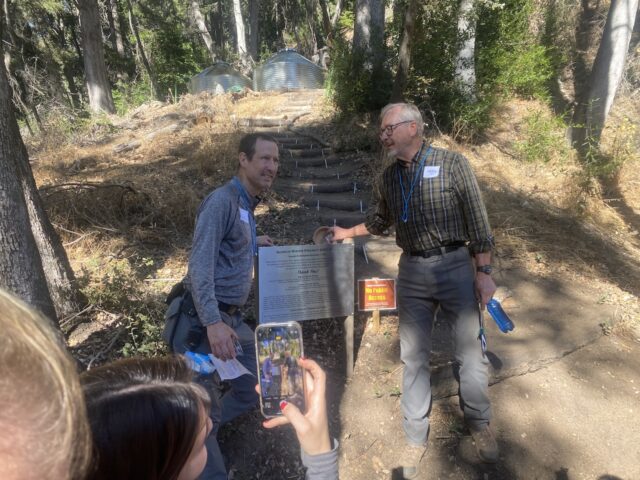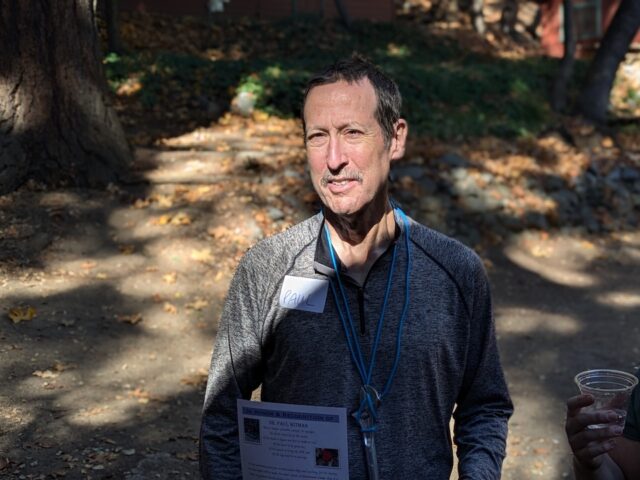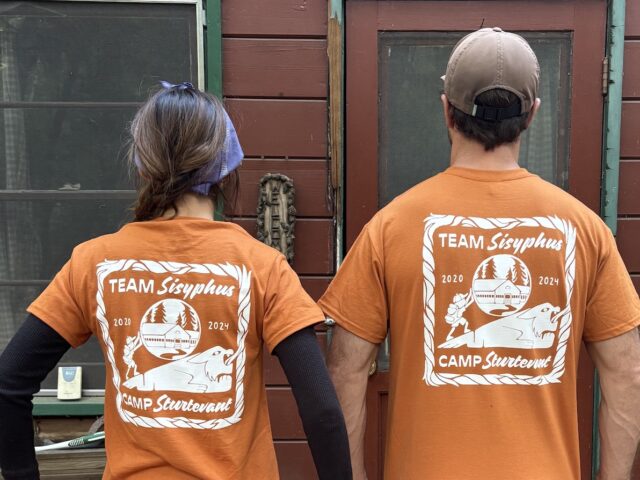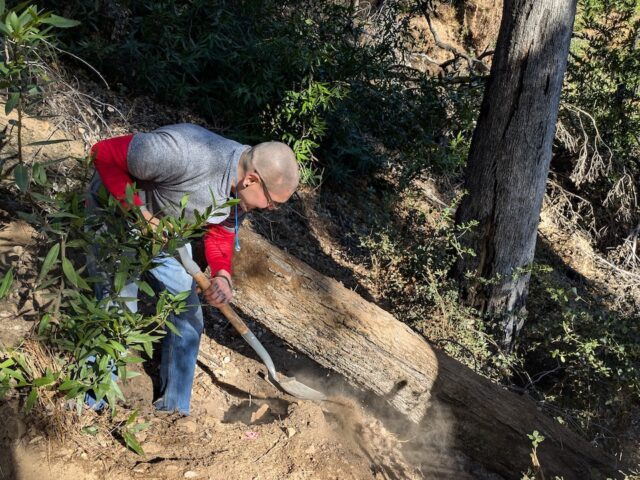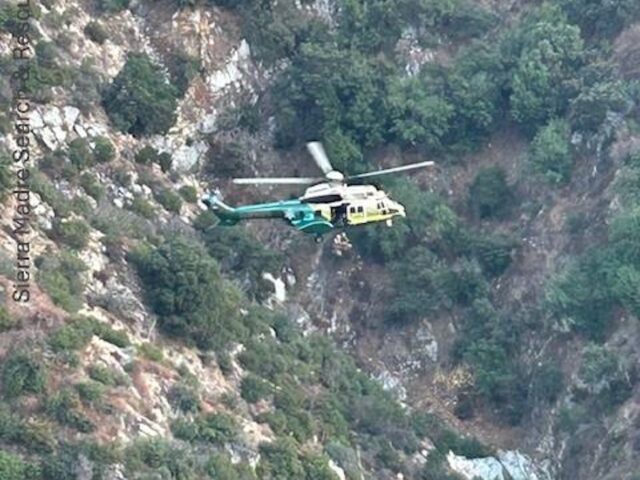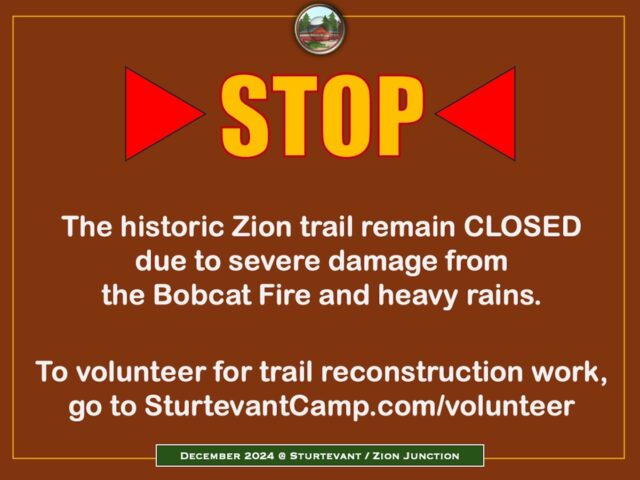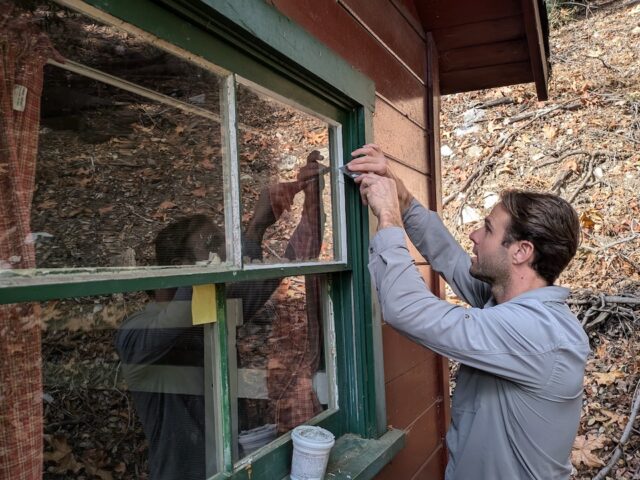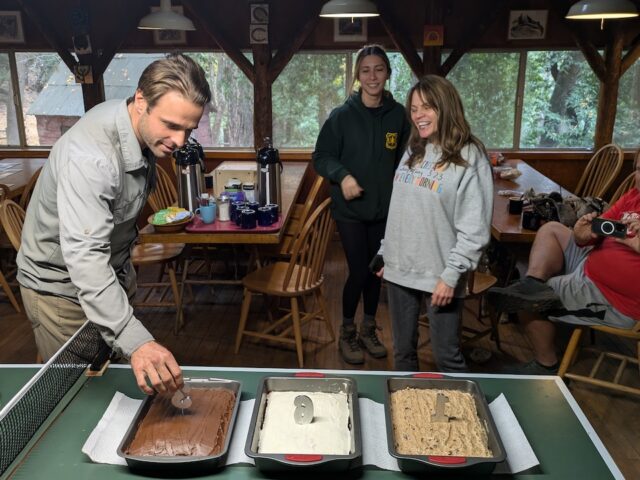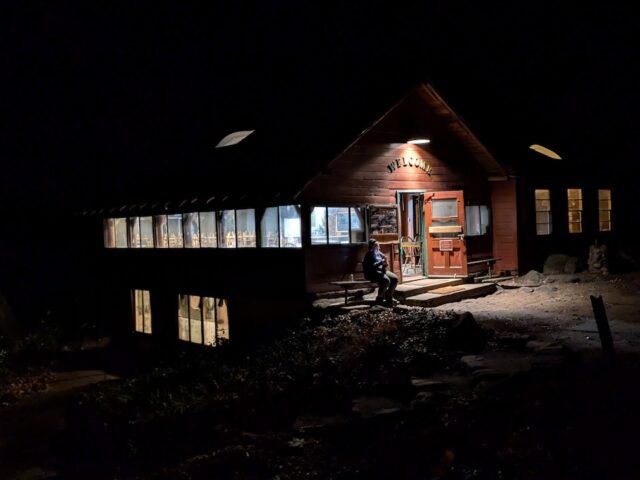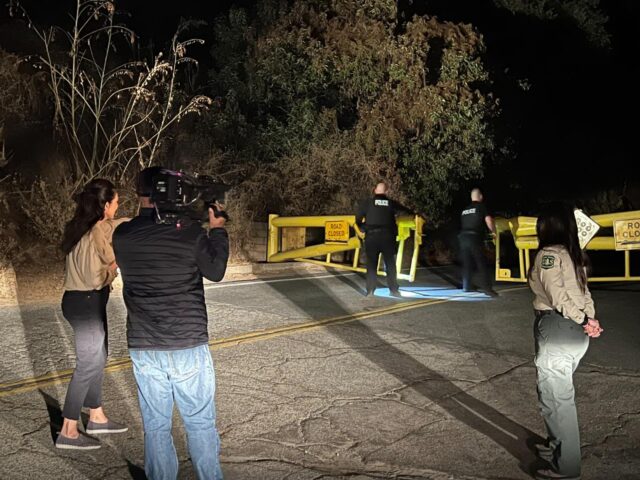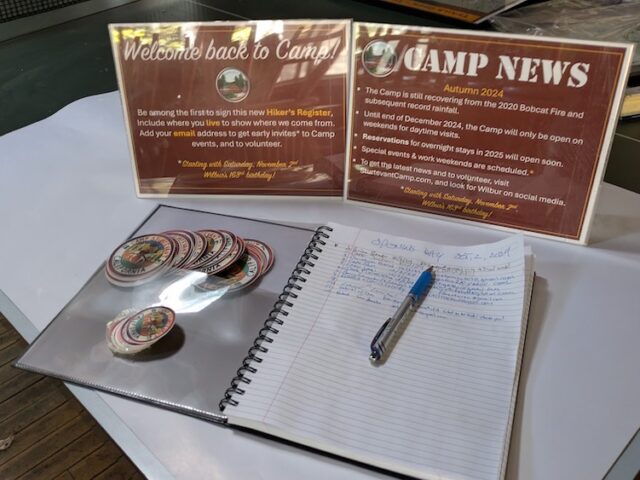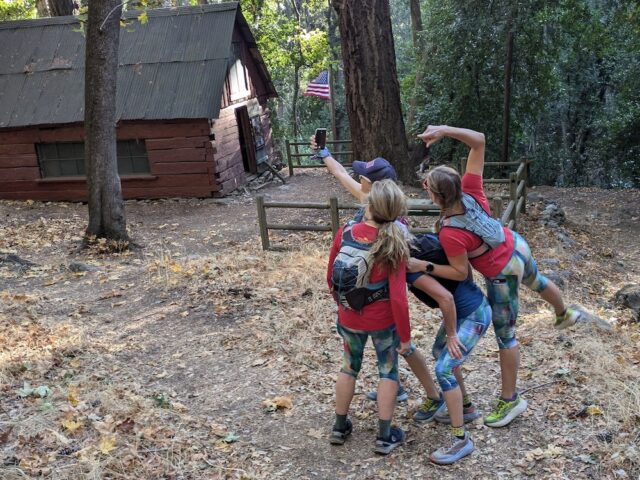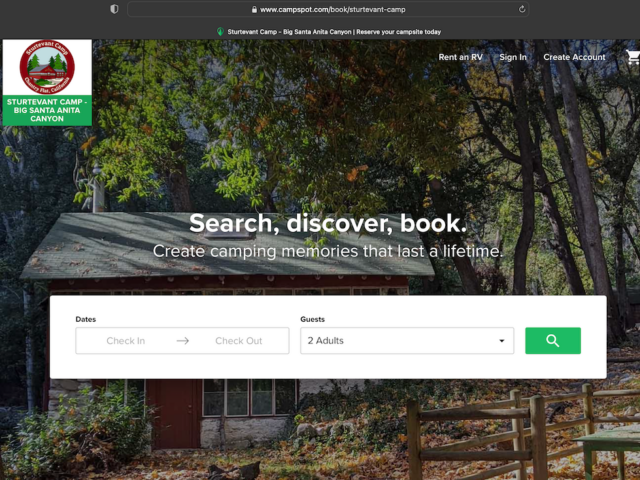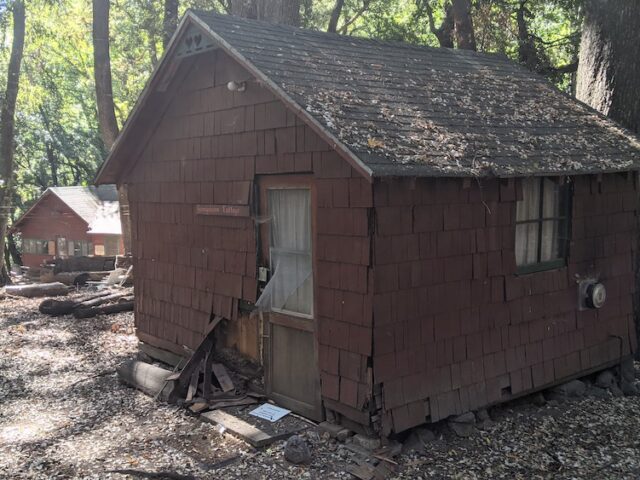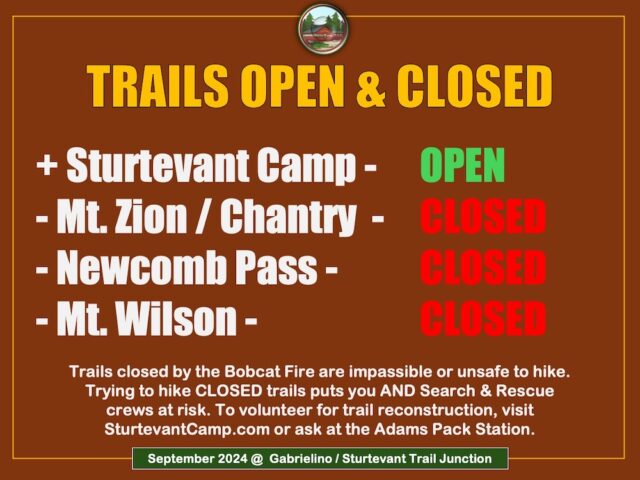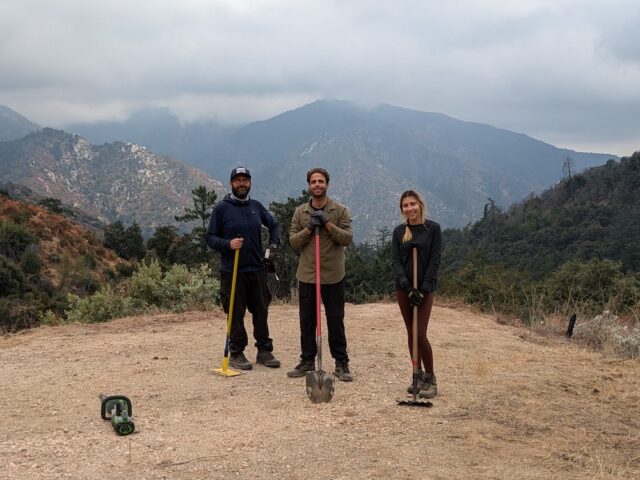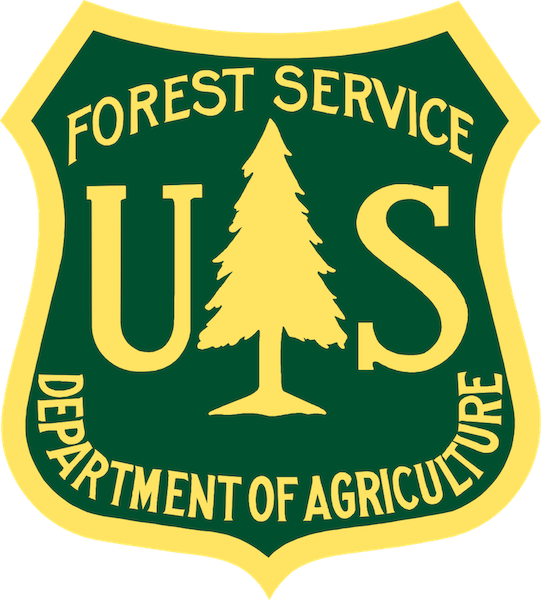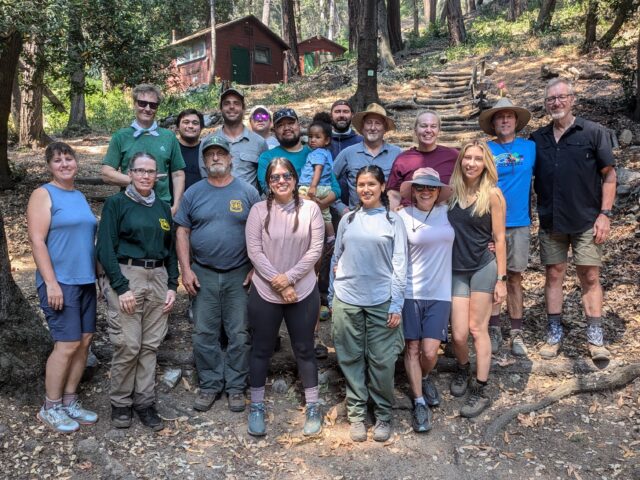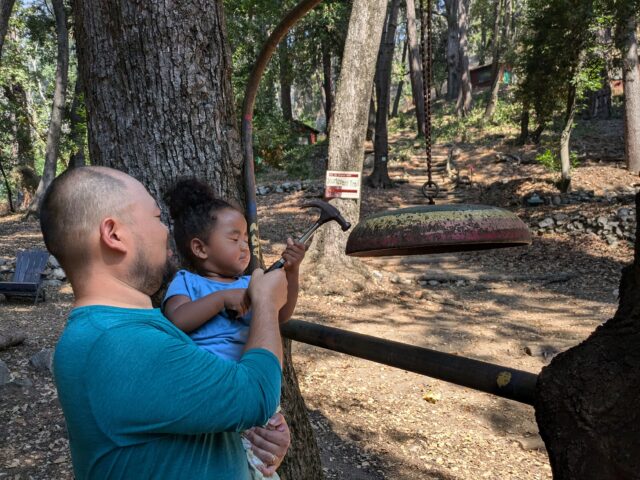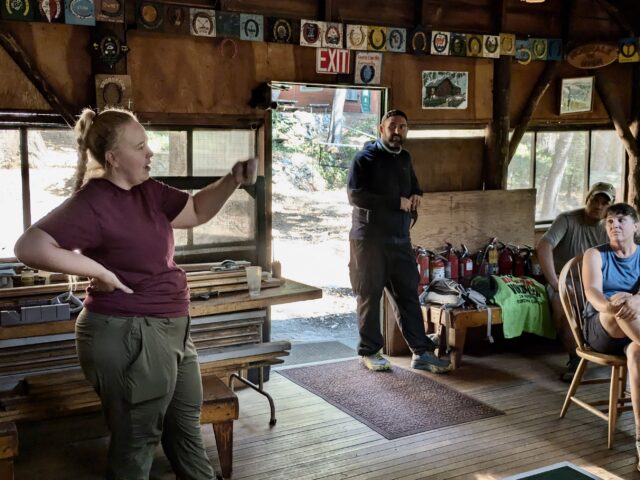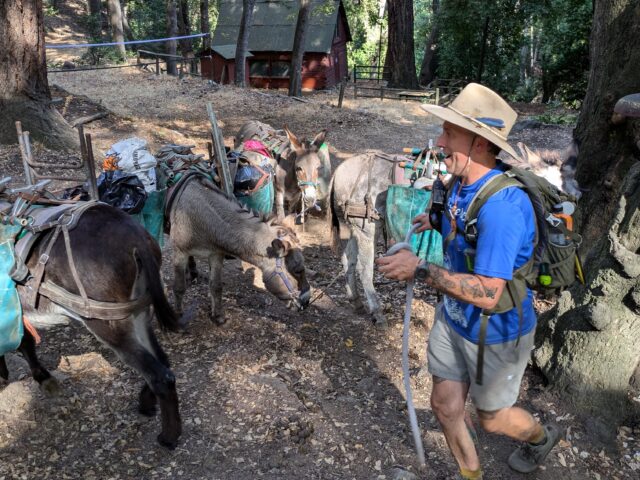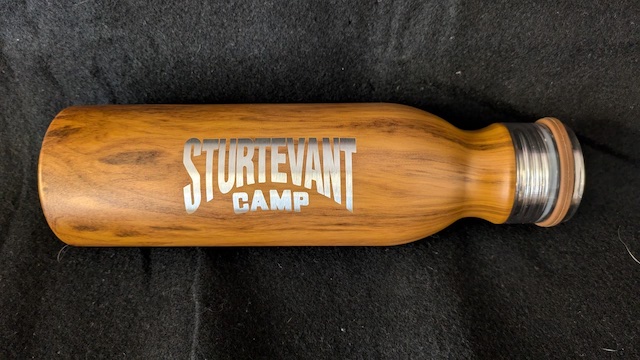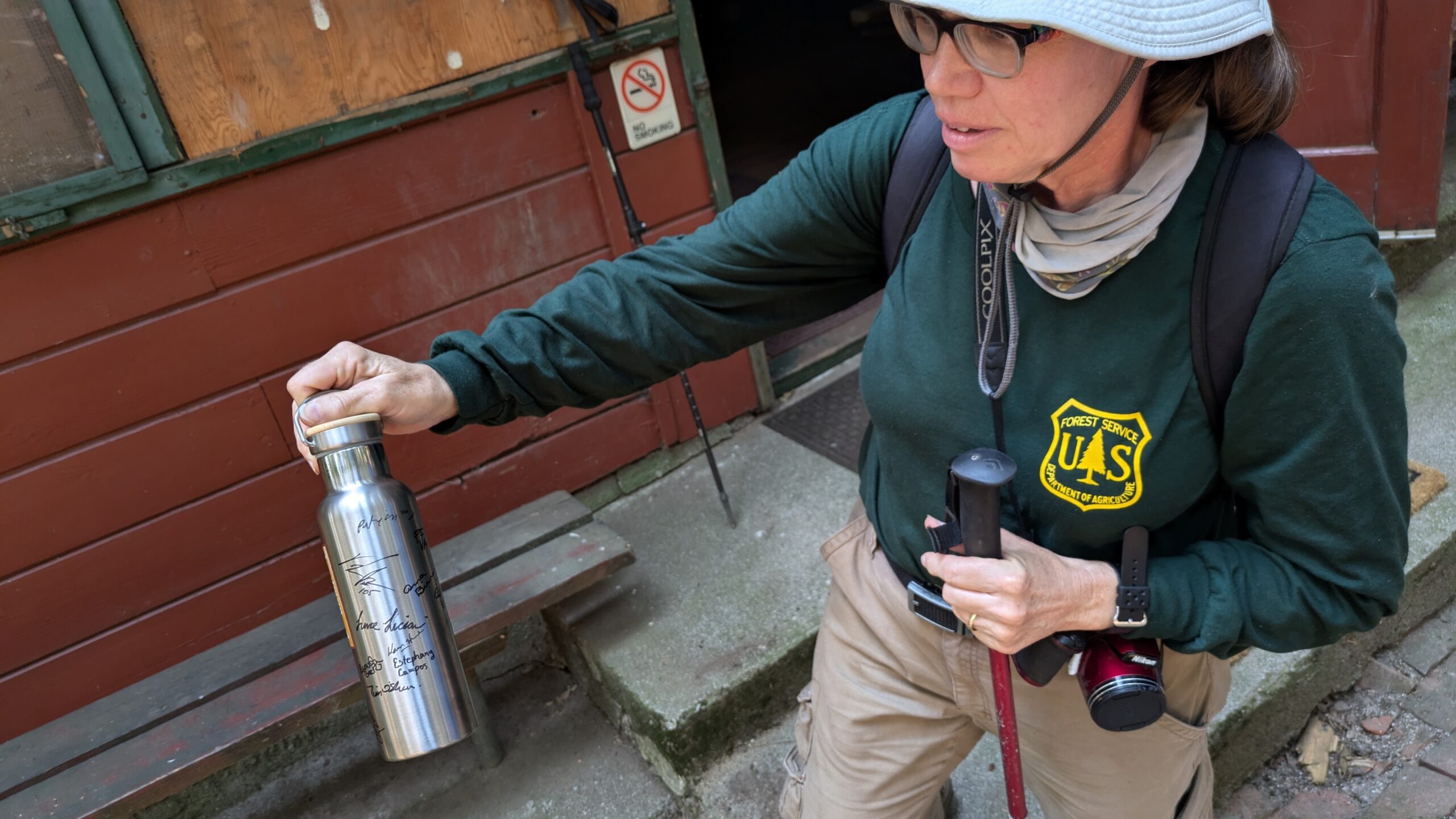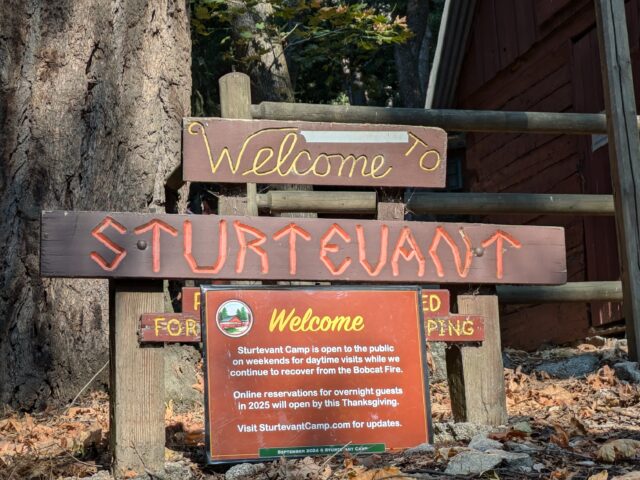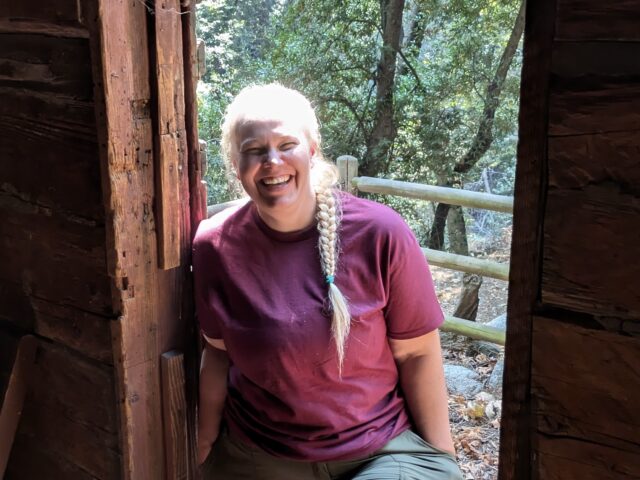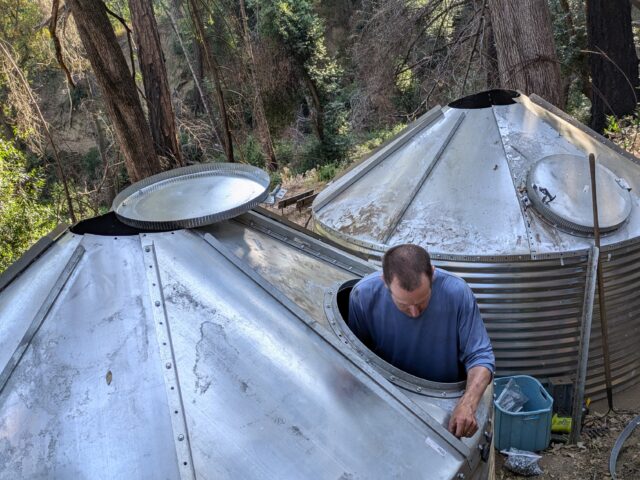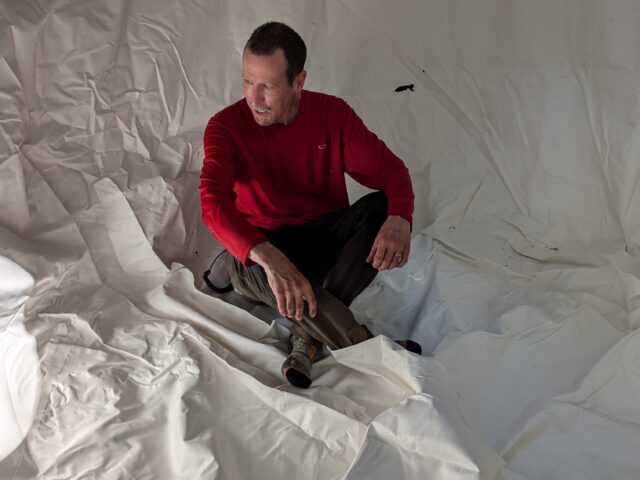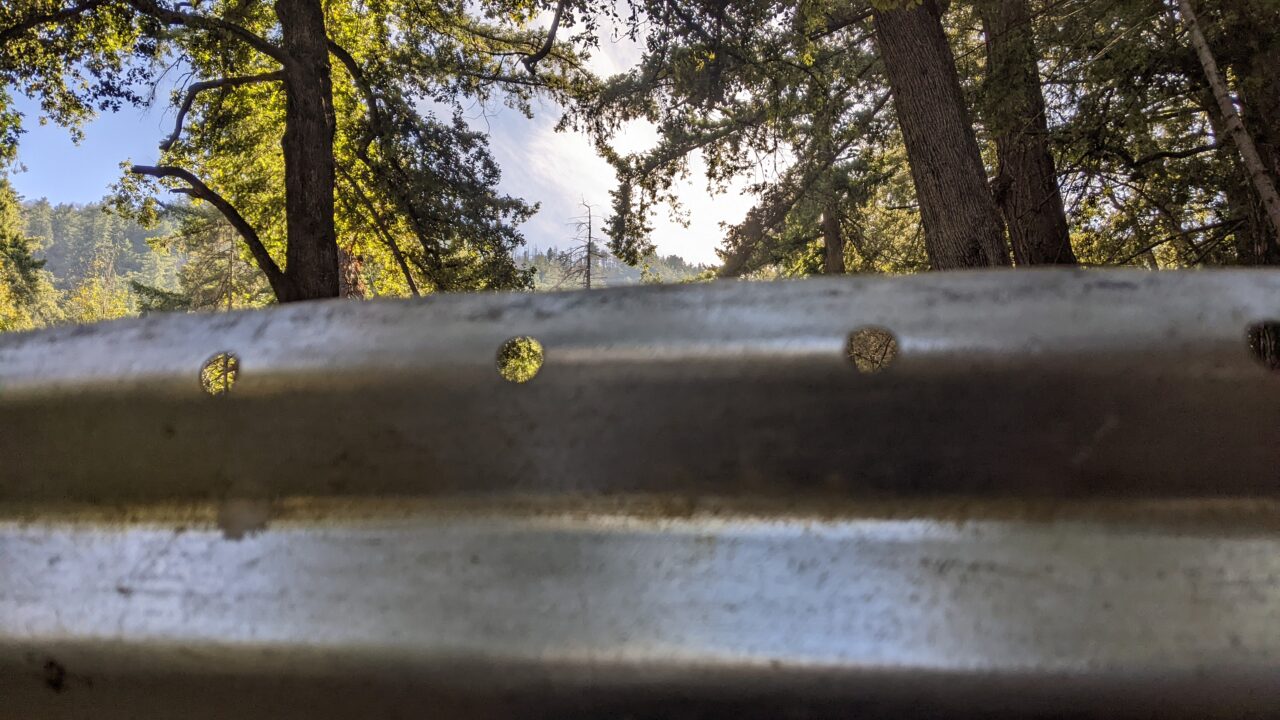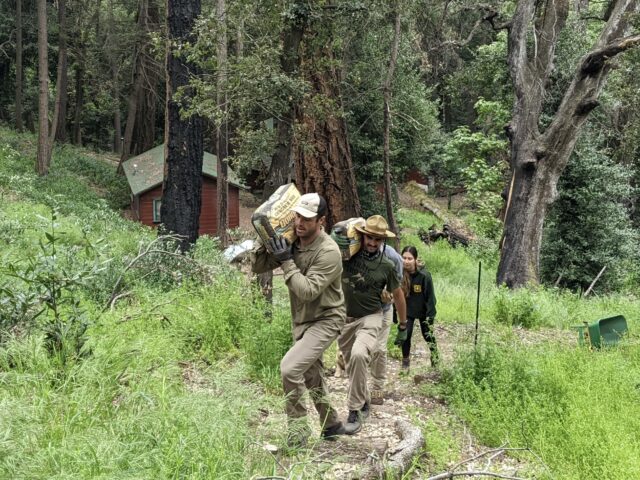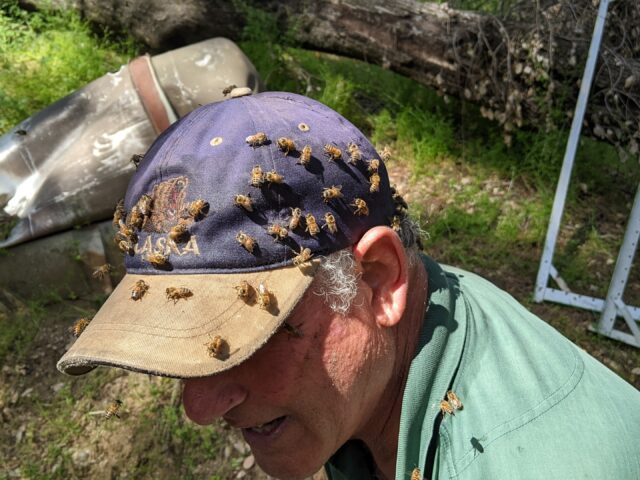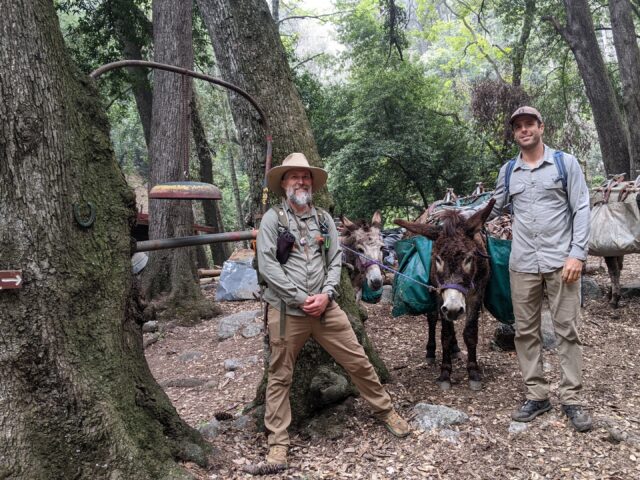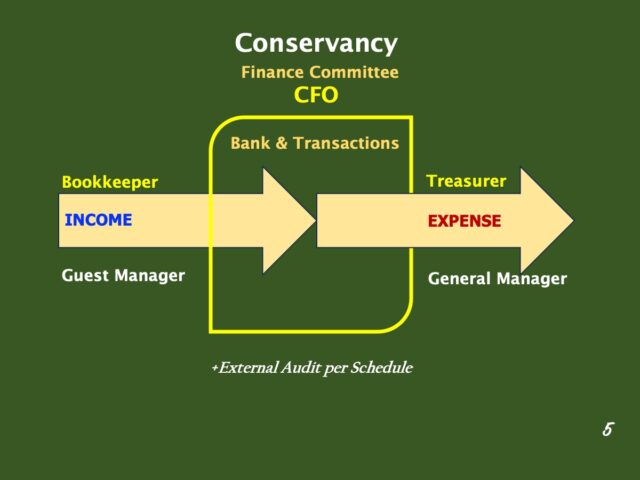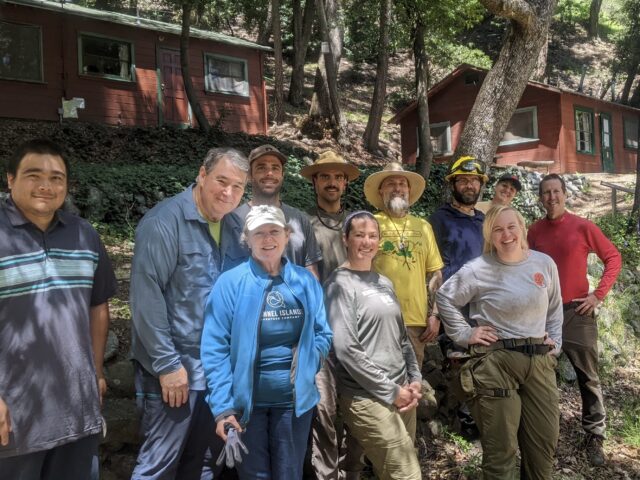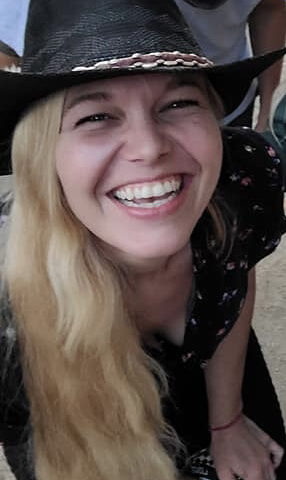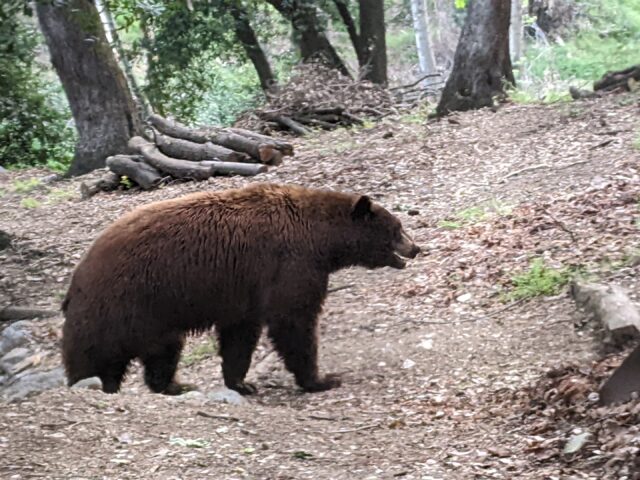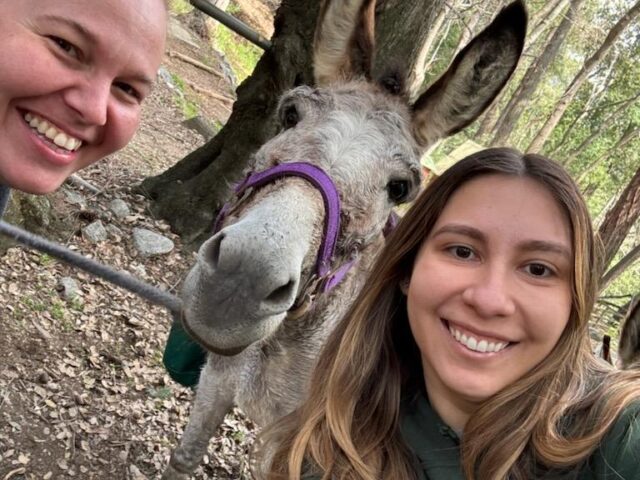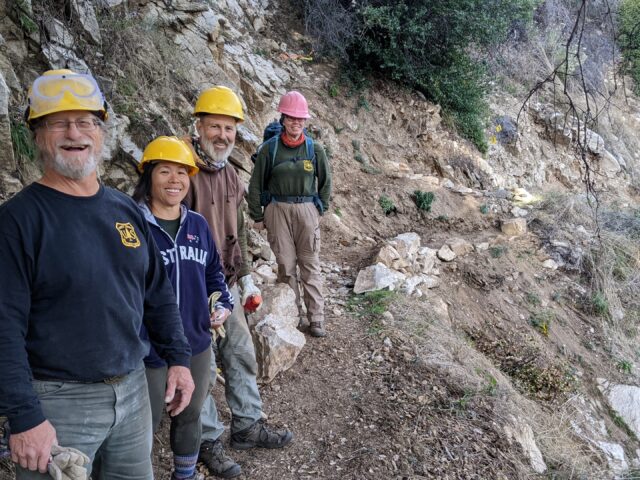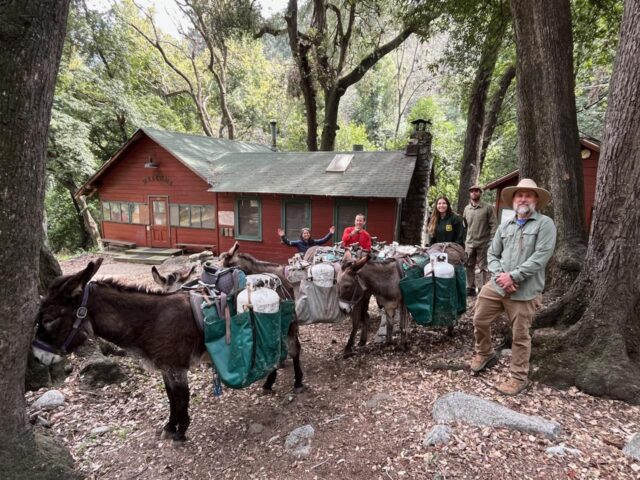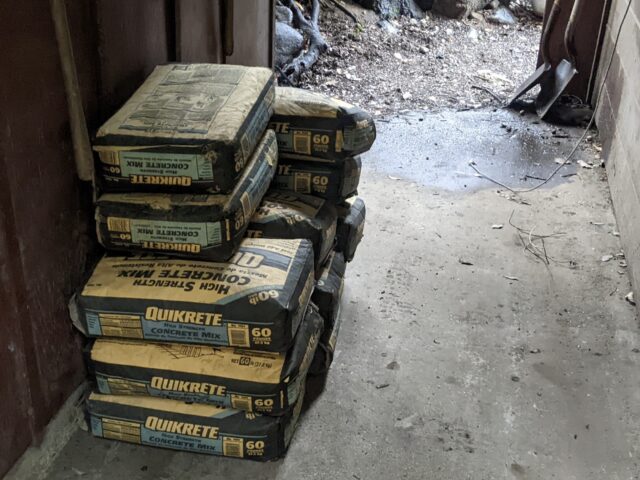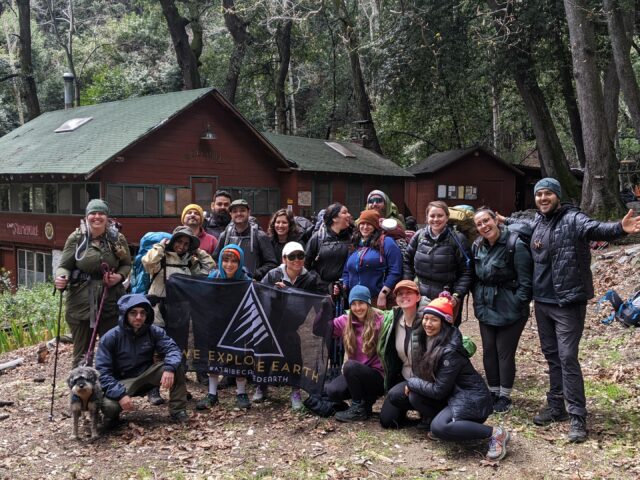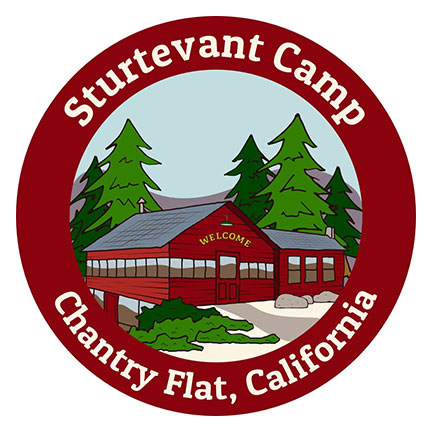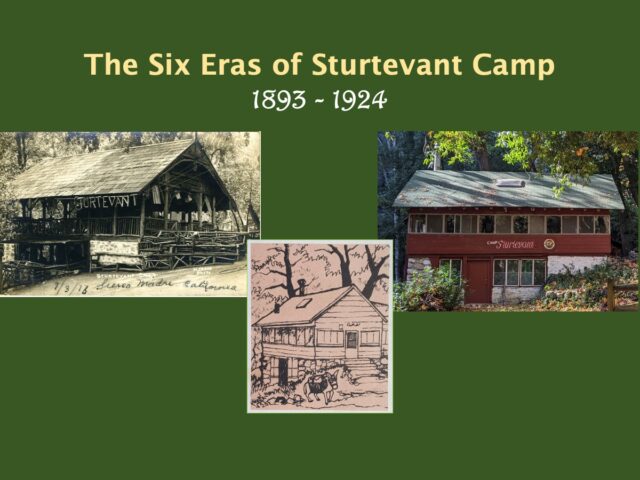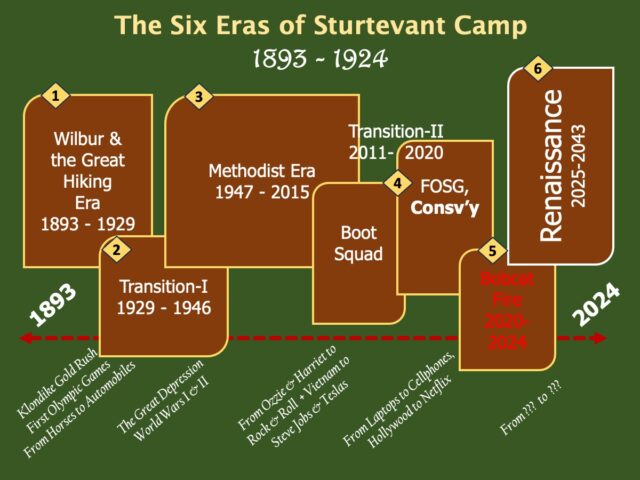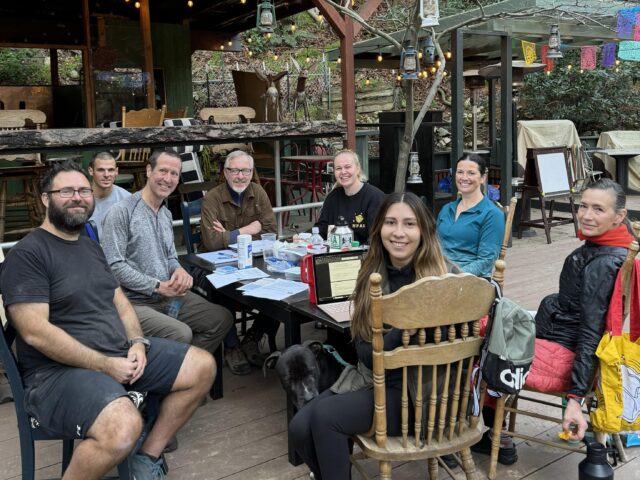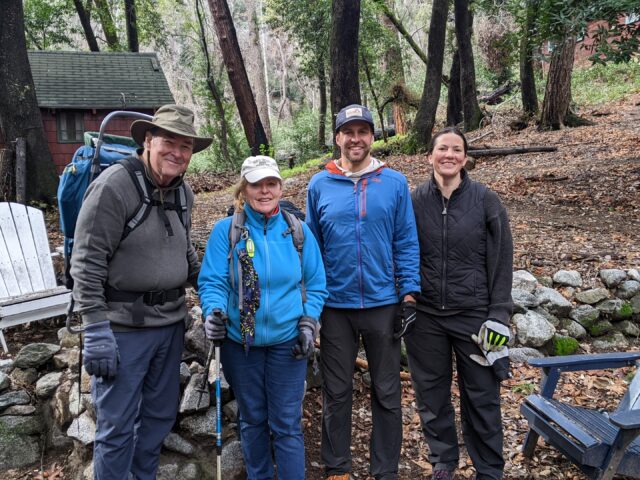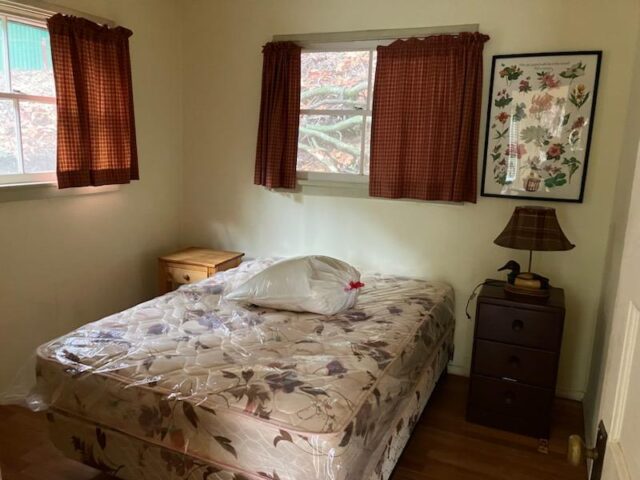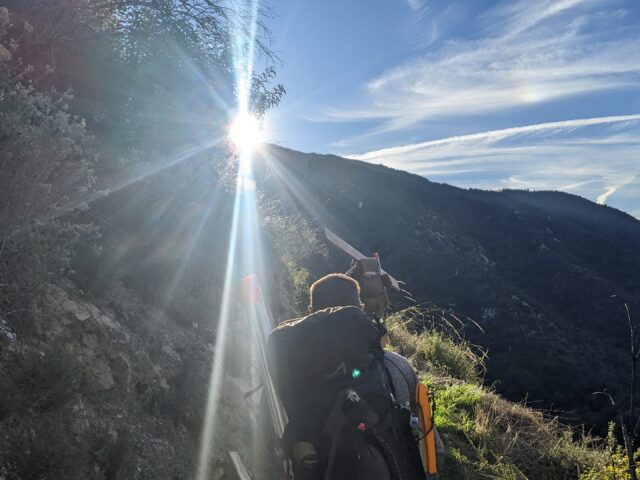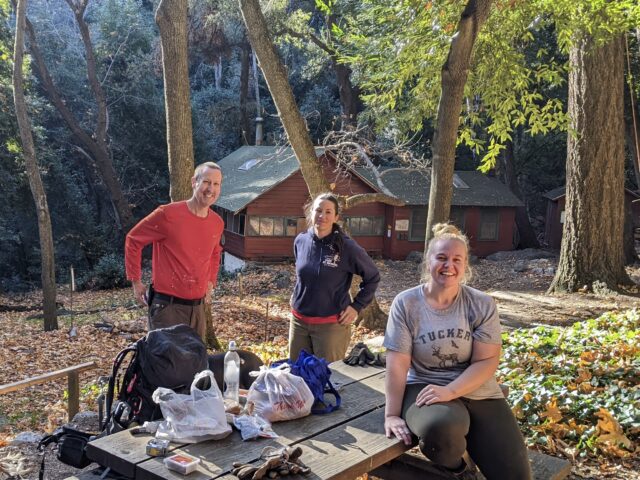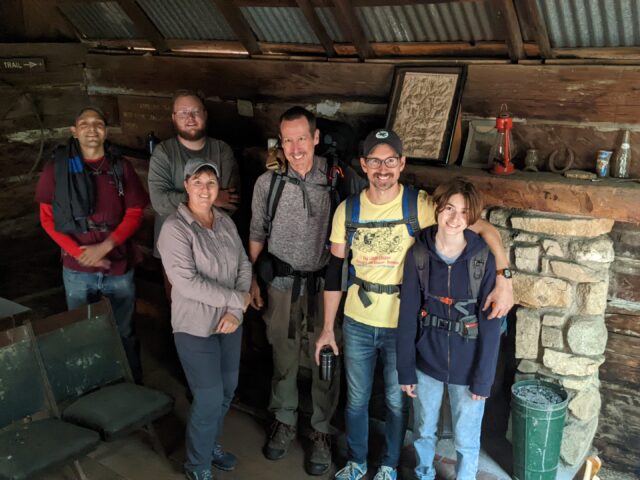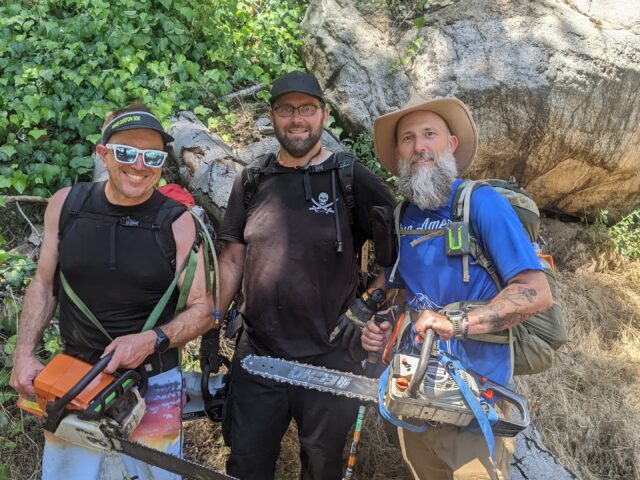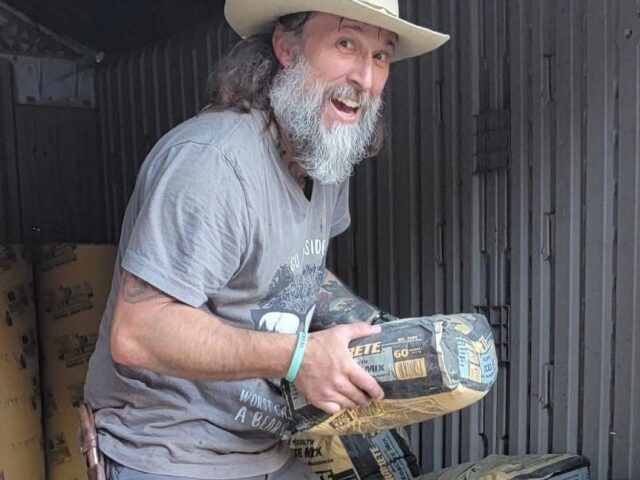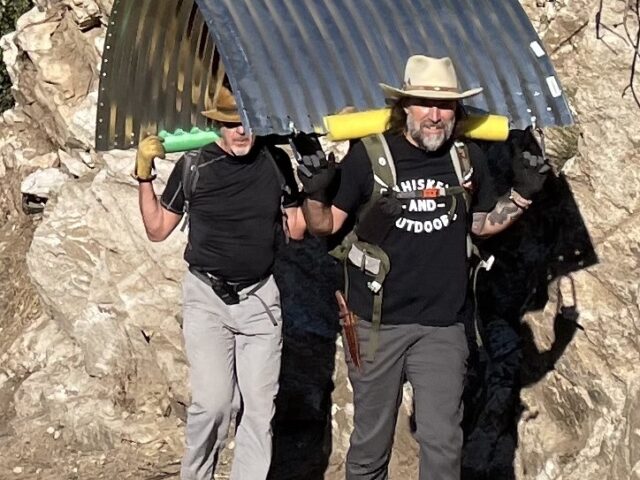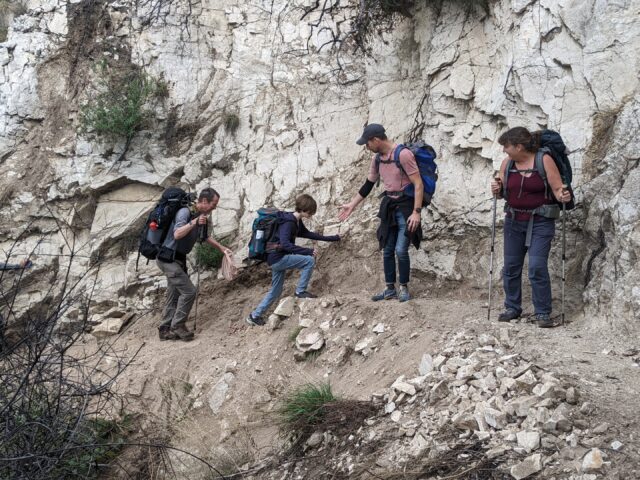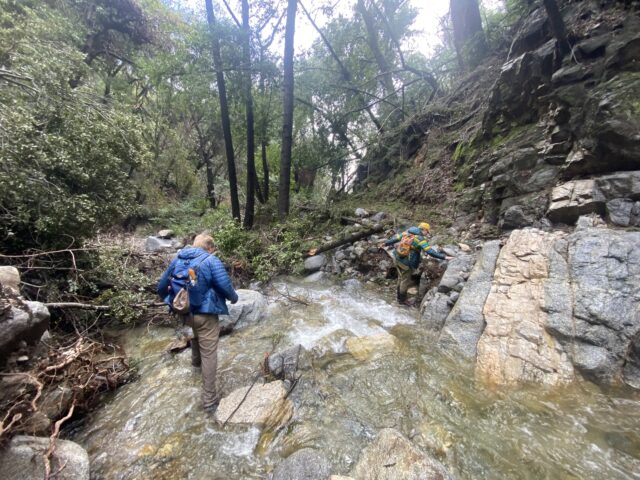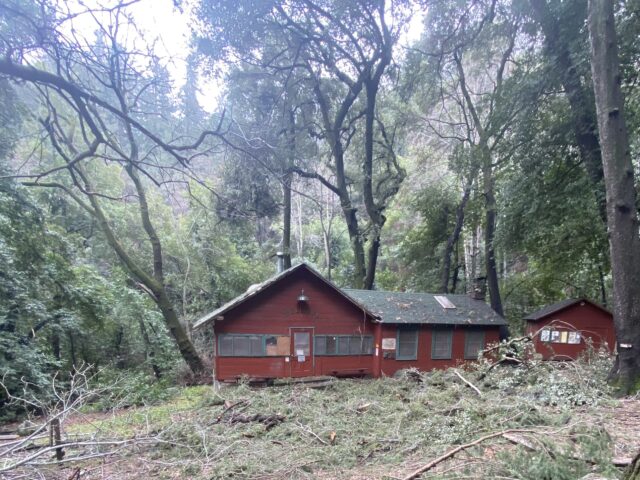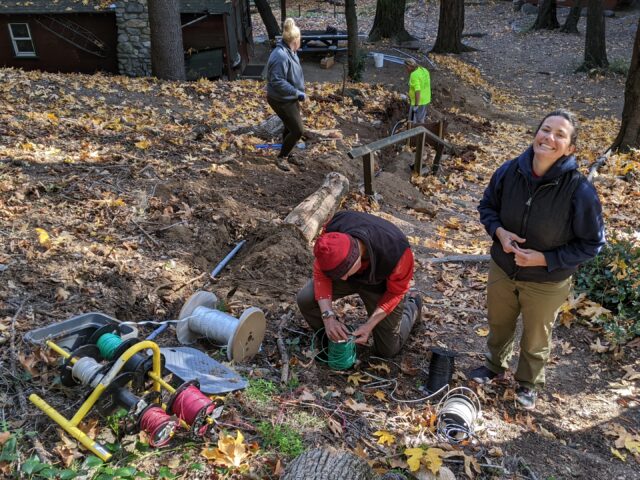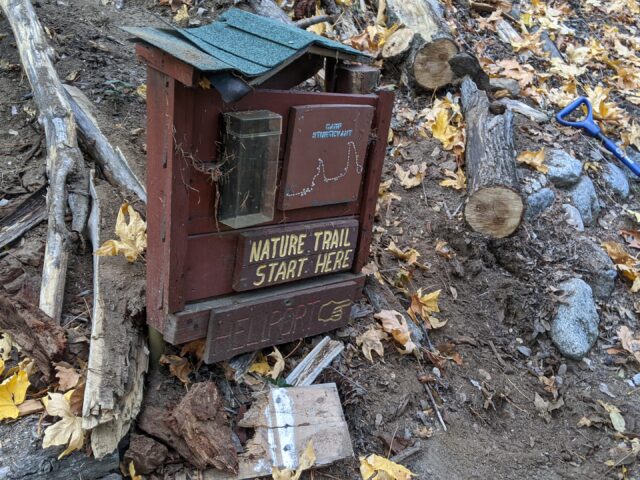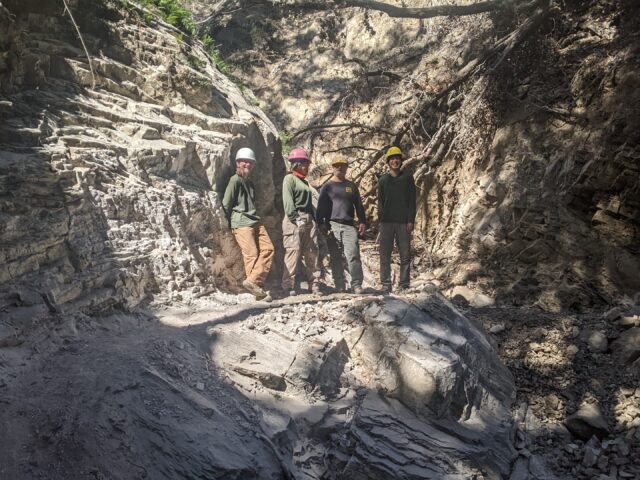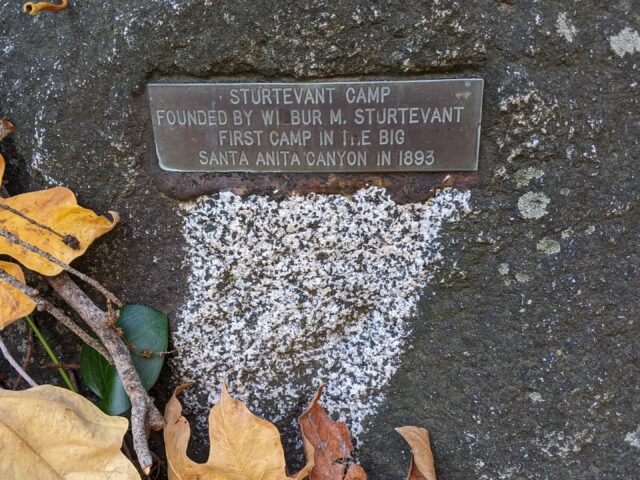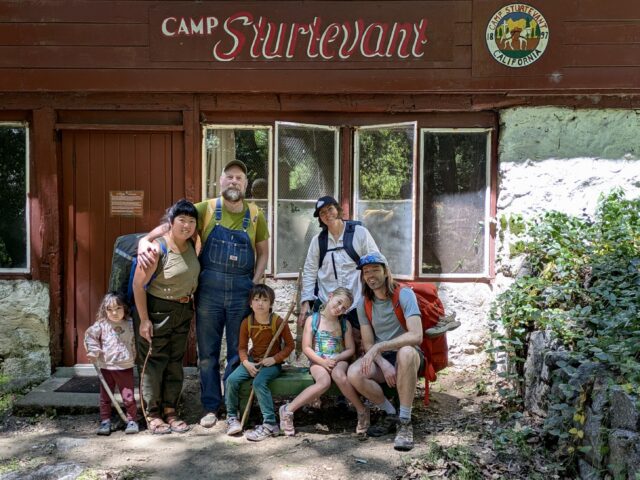
teamed up to hike to Camp for a long, lazy weekend.
They Grow So Fast
Guest Manager Teah Vaughn Piscopo was hosting the weekend the Bobcat Fire broke out, and evacuated guests down the Canyon. This included the Winters family and their kids, who have been eager to come back to Camp once the Canyon reopened. Except that four years later, what were little kids then are now seniors and graduates with jobs, so it took a while for the reunion to finally happen. Here they are left to right, Rosalie, Ike and Millie—and Teah!
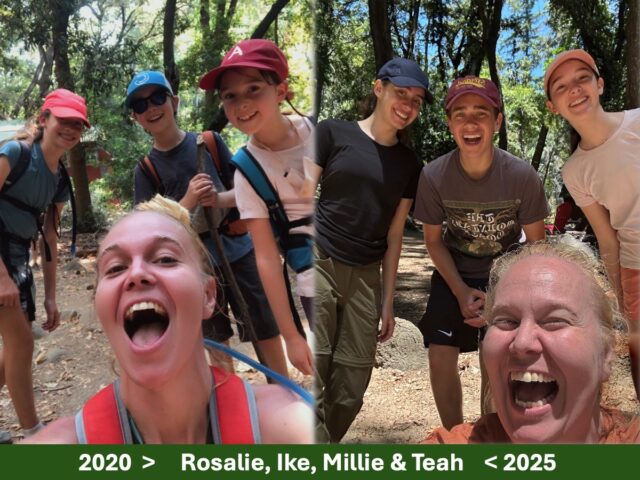
Q&A: You’re All Booked Up, Right?
Day-hikers in Camp frequently ask, “How far in advance do I need to make a reservation?” Answer: if you like to plan ahead, plan as far out as you like, but if you’re feeling spontaneous, you can come right now, this summer!
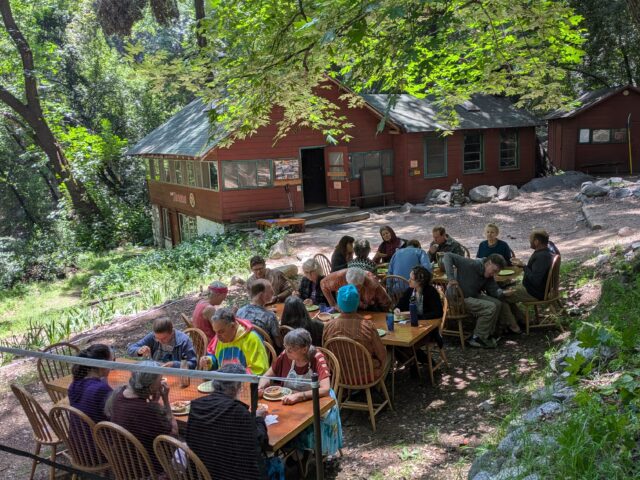
Booking is all on-line, and starts with choosing a date and the number of people; the interactive site will then show what is available. The Camp has six different lodgings available with 32 “pillows” throughout; there are four full/double beds (8 people) and 12 double bunks, so 24 single mattresses with blankets and pillows (rental sheet sets are available).
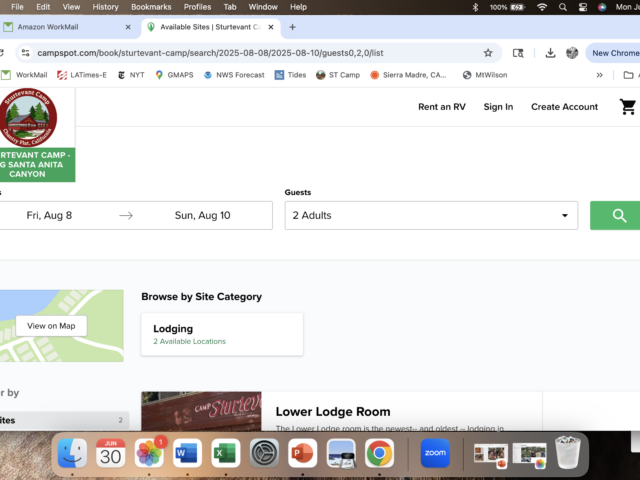
Check it all out here and see you in Camp soon!

so each cabin has this guide to shared housekeeping.
Dancers Who Hike or Hikers Who Dance?
For many years, the largest annual group at Camp has been the Southern California community Dance Coalition – aka “those Contradancers”. After five years shut out by the Bobcat fire, they finally returned in joy and sound and motion and fun over Memorial Day weekend. Here are a few snapshots, including their Memorial Day remembrance.

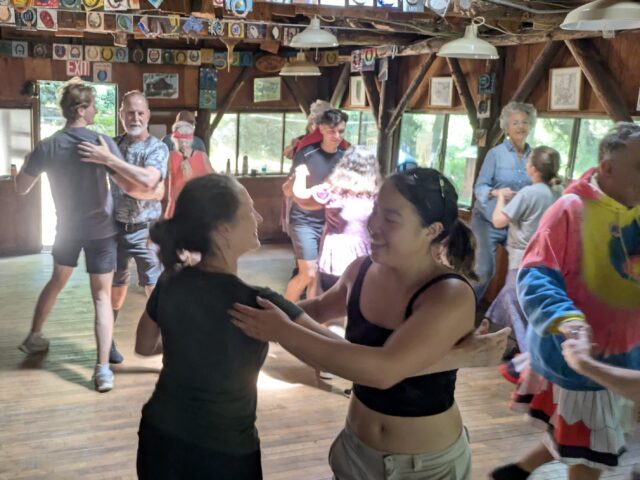
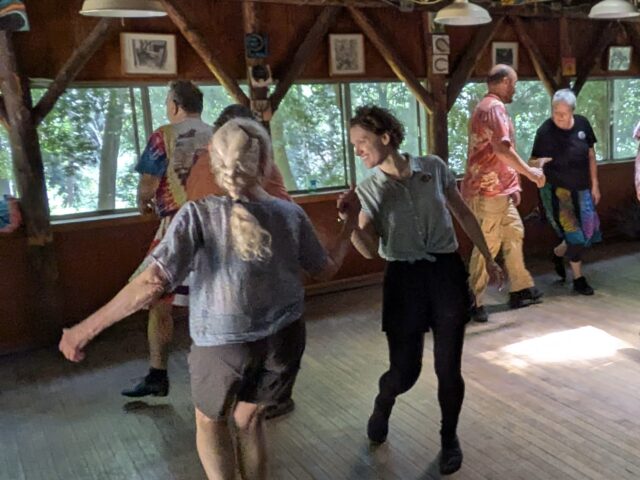

Q&A: How Did That Piano Get Here?
The question Camp Hosts are asked most often is, “How do YOU get here?” The assumption is there’s a secret back road in, because who in their right mind would make that hike in every time? When told the only way in is by boots and everyone hikes, the next question is typically, “So how did the piano get here?”
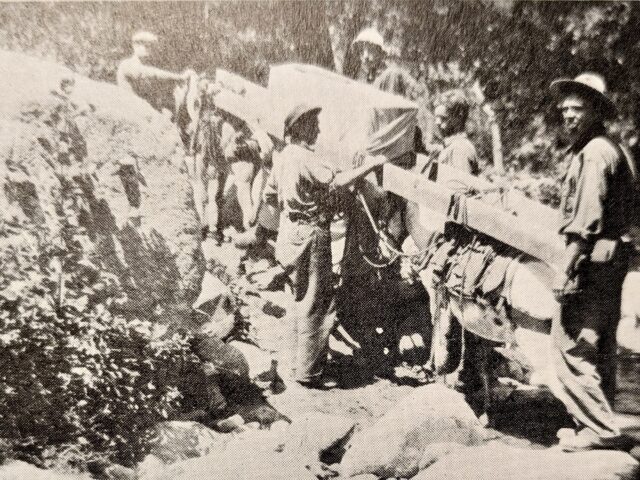
Back in the day, pianos were in fact packed on mules—or more accurately, between two mules (see photo.) But it is doubtful that any of the early owners of the Camp would have bothered to drag a piano up the Canyon, especially since the Lodge was open to the elements, which sometimes included snow.
Instead, the best guess is that during a brief period in the late ‘50s into the ‘60s, the ‘Burma Road’ did in fact go to up to Camp; this was the construction road for LA County’s debris dam project. Very likely the Camp’s owner at the time (the Methodist Church) was granted access to bring in heavier pieces of improvement, starting with the eight burner/dual oven Wolf range for the Lodge kitchen; the piano would have been an obvious add-on.
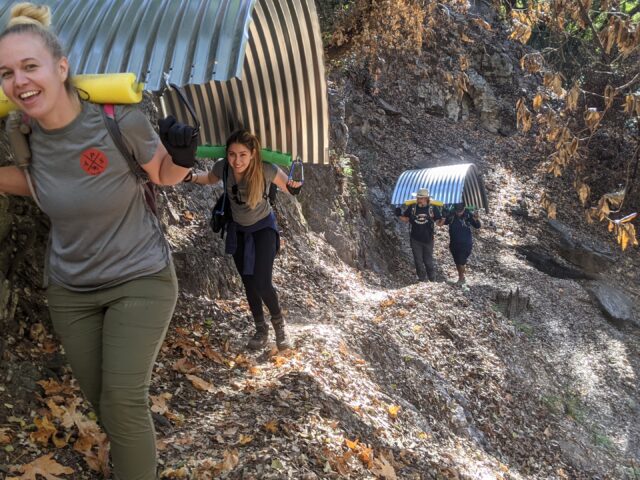
But since the dams were completed and the road torn out, there have been only two ways for stuff too big for the burros to come in: one is by hand, which means people using arms, legs and sometimes wheeled contraptions. The Lodge woodstove came down from Newcomb Pass this way, with eight hikers rotating in teams of four; same for the water tank panels, two-by-two, but all the way UP from Chantry.
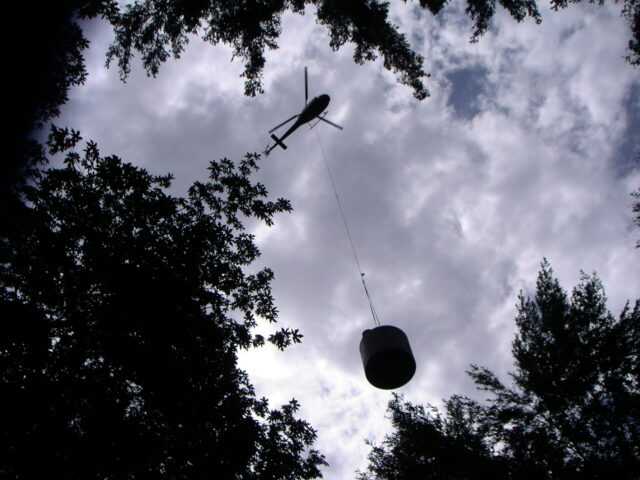
And in a few very rare, very special instances, the Camp has benefited from helicopter deliveries (and pick-ups). For example, the fancy German ping-pong table in the Lodge came in by chopper, along with full size mattresses, new refrigerators, and the ‘old’ plastic water tank. Going out were old refrigerators and water heaters and bed frames, the kinds of heavy hardware that used to get buried in the hillside.
The mountains dictate everything we do, what we have and how we get it: all hail the mountains!
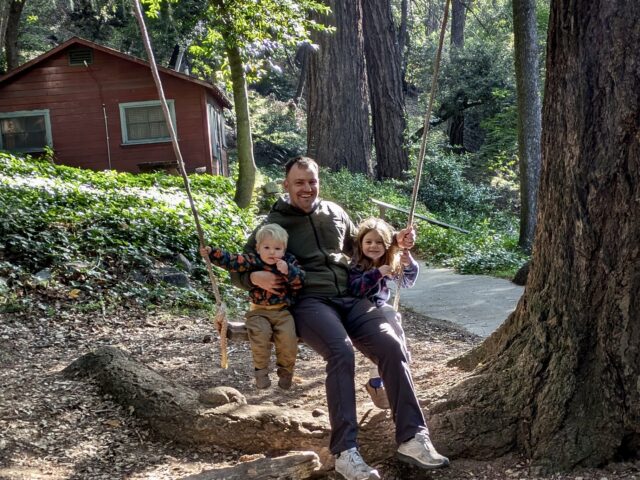
but what dad can resist his two-year-old backed up by a Big Sister?
Q&A: “Vare iz de hikingk?”
The end of a long weekend in Camp is always marked by coming down the Chantry Road and seeing the high-rises of downtown LA pop up against the setting sun. But this time, an oncoming car slowed with a hand waved out the window, an obvious request to STOP and it turned out, Talk to me.
Rolling down the window, a woman who could be your favorite aunt leaned out and said, “Vare iz de hikingk?” You mean, the parking at the trailhead? “Yezz, de Santa Anita hikingk!!” Up the road a few more minutes. “OK, tank you!”
It was 6:15pm, the sun going down, and soon the lower gate would lock off the Canyon, coming and going. What was she thinking? What did she know? Likely not much, or at least not enough. But more importantly, what did she want? What would move a woman to drive up an unknown road at the end of the day to hike in an unknown place?
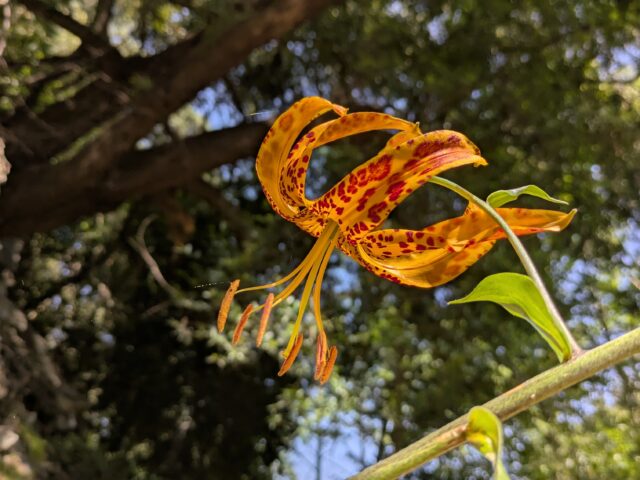
There are no answers, only speculation. Given her accent, perhaps she was a new resident, exploring a new place; likely information was only available in English and therefore not readily accessible to her. Yet she wanted to hike: after work, to squeeze in some personal time? To get out of the house, away from some dramas? To be outdoors and away from the hustle and congestion and cell service? Maybe to be among the trees, along the stream, a place similar to a home far away?
All kinds of people come from all over greater LA and far beyond to hike in the ‘Santa Anita’, for all kinds of reasons. It has been that way for more than a century, when Wilbur first hacked a trail down from Mt. Wilson and advertised his mountain “hotel” (tents, actually.) The magic of the Canyon continues to draw people to the Camp, and we don’t second guess their motivations, only share in their satisfactions.
Whatever your reasons are, come on up and meet other folks, perhaps discover their reasons, and share in the timeless gifts of the mountain wilderness; you are welcome here.
Gary Keene, Board member
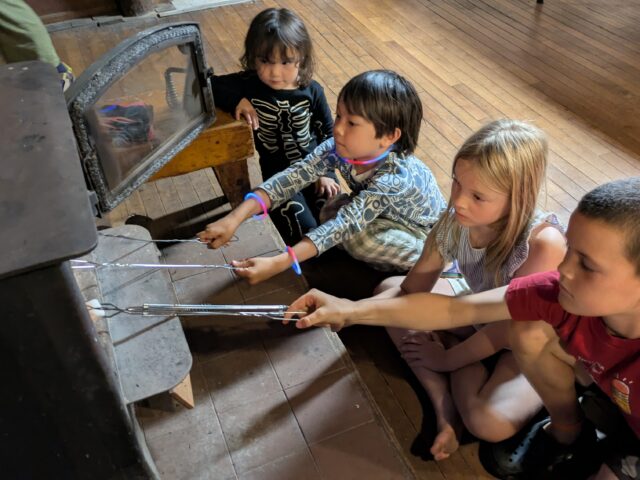
some golden, some flaming, many charred.
